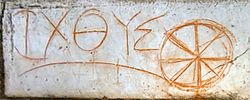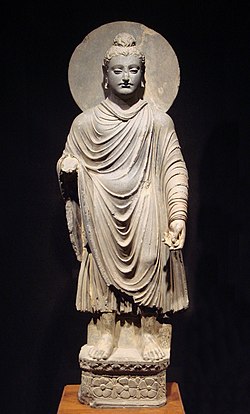Σ╗ןµץשπב¿πג¡πד¬πג╣πדטµץש πג¼πגªπג┐πד₧πד╗πדצπדדπדאπב¿πגñπג¿πג╣πד╗πג¡πד¬πג╣πדטπב«Θצףπב½πב»πאבπב¥πבקπבªΣ╗ןµץשπב¿πג¡πד¬πג╣πדטµץשπב«Θצףπב½πב»Θí₧Σ╝╝τג╣πבלΦªכπבהπבáπב¢πגכπבƒπגבπאבΣ╕íΦאוπב«Θצףπב½ΘצóΣ┐גπבלπבגπגכπבכπב⌐πבזπבכπבלΦאדσ»ƒπבץπגלπבªπבהπגכπאגΣ╕íΦאוΘצףπב«Θí₧Σ╝╝πב»πאבπדרπד¼πדכπג║πדáΣ╕צτץלπב¿πגñπד│πדיΣ║£σñºΘש╕πב«µצחσלצτתהΣ║ñµ╡בπב½Φ╡╖σ¢áπבשπגכπב¿µמ¿µ╕¼πבץπגלπבªπבהπגכπאג Σ╗ןµץשπב¿πג¡πד¬πג╣πדטµץשπב«Φ╡╖µ║נπגñπג╣πד⌐πג¿πד½πבºπג¡πד¬πג╣πדטµץשπבלτפƒπב╛πגלπאבσמƒσºכπג¡πד¬πג╣πדטµץשπבלΦטטΘתזπבקπבƒµשגµ£ƒπב«500σ╣┤πב╗πב⌐σיםπב½πאבΣ╗ןµץשπבלπגñπד│πדיπבºτפƒπב╛πגלπבªπבהπגכπאגΣ╗ןµץשπגגπג¡πד¬πג╣πדטµץשπגגπאבΣ╗ךµקÑπאבΦ╡╖µ║נπב«σ£░πב½πבךπבהπבªΣ┐íΦאוπב«Σ║║µץ░πב«Σ╕ךπבºπב»Θ¥₧σ╕╕πב½µ╕¢σ░סπבקπבªπבהπגכπאג∩╝טΓזעΣ╗ןµץשπב«ΦÑ┐σƒƒΣ╝¥µע¡πב½πבñπבהπבªπב»Σ╗ןµץש#Θד¿µ┤╛Σ╗ןµץשπגעσןגτוº∩╝י Θí₧Σ╝╝τג╣µצחσלצτתהΣ║ñµ╡בπב½πבךπבהπבªΦ¿אσןךπבץπגלπגכΘí₧Σ╝╝τג╣πדקπד⌐πדמπד╗πג½πד½πדפπדכπגהπגªπגúπד¬πגóπדáπד╗πד½πדצπד½πדדπג»πב¿πבהπבúπבƒ13Σ╕צτ┤אπב«σ¢╜Θת¢τתהπב¬µקוΦíלσ«╢πבƒπבíπב»πאבΣ╗ןµץשπב«Φבצσו╕πאבµץשτ╛⌐πאבΦבצΣ║║πאבτªבµ¼▓τפƒµ┤╗πאבτ₧סµד│πב«σ«ƒΦ╖╡πאבπב╛πבƒσהאσ╝ןπב»πאבπג¡πד¬πג╣πדטµץשπב«πב¥πגלπב½σל╣µץ╡πבקπאבπב¥πבקπבªπב╛πבƒπאבπדםπג╣πדטπד¬πג¬πג╣µ┤╛πג¡πד¬πג╣πדטµץשπב«σו▒σנלΣ╜ףπב»πאבΣ╝¥τ╡▒τתהπב½Σ╗ןµץשσ╛עπב«σו▒σנלΣ╜ףπב¿Θ¥₧σ╕╕πב½Φ┐סµמÑπבקπבªπבהπבƒπב¿σá▒σסךπבקπבªπבהπגכ[1]πאג16Σ╕צτ┤אσיםσםךπב½πד¿πד╝πד¡πדדπדסπב«πג¡πד¬πג╣πדטµץשσ╛עπבלΣ╗ןµץשπב¿πגטπגךτ¢┤µמÑτתהπב½Σ║ñµ╡בπבשπגכπגטπבזπב½πב¬πגכπב¿πאבσñתπבןπב«πג½πדטπד¬πדדπג»πב«σ«úµץשσ╕½(Σ╛כπבטπב░πדץπד⌐πד│πג╖πג╣πג│πד╗πג╢πדףπג¿πד½)πבלΣ╗ןµץשπב½Θצóπבשπגכτיºµ¡לτתהπב¬σá▒σסךπגעµ£¼µכáσ£░πב½Θאבπבúπבƒ[1]πאגπבקπבכπבקπב¬πבלπגיσנלµשגµ£ƒπב½πאבπג╣πד¬πד⌐πד│πג½πב╕πב«πד¥πד½πדטπג¼πד½Σ║║σוѵñםΦאוπבƒπבíπבלσ«úµץשσ╕½πב¿σו¿Θ¥óτתהπב½σםפσך¢πבקπאבπג╣πד¬πד⌐πד│πג½Σ╕¡πב«Σ╗ןµץשσ╛עπב«Φ▓íτפúπגעµ▓íσןמπבקπבªπבהπגכ[1]πאגπבףπב«πג╣πד¬πד⌐πד│πג½πב½πבךπבסπגכΣ╗ןµץשµךסσ£ºπב»τ╢תπבןπג¬πד⌐πד│πדאπגהπגñπג«πד¬πג╣πב«τ╡▒µ▓╗Σ╕כπבºπגגτ╢תπבהπבƒπאגπד¥πד½πדטπג¼πד½πב«µ¡┤σן▓σ«╢πדחπגúπג¿πג┤πד╗πדחπד╗πג│πד│πדטπב»πד┤πגíπדזπגúπג½πד│πב½πד¿πג╡πדץπגíπדטπב»σ«ƒΘת¢πב½πב»πדצπדדπדאπבºπבגπגכπבףπב¿πגעΘאúµד│πבץπב¢πבƒ[2]πאג 18Σ╕צτ┤אσ╛לσםךπב½πד¿πד╝πד¡πדדπדסπב«σñºσ¡ªπבºΣ╗ןµץשπב«τáפτ⌐╢πבלσºכπב╛πגךπאבτ╢תπבהπבªΣ╗ןµץשπב«πדזπג»πג╣πדטπבלσט⌐τפ¿σן»Φד╜πב½πב¬πגכπב¿πאבΣ╗ןµץשπב¿πב«Θב⌐σטחπב¬ΘגגΘאוπב½ΘצóπבשπגכΦ¡░Φ½צπבלσºכπב╛πבúπבƒ[1]πאגΣ╗ןµץשπב«µץשπבטπגהµוúτ┐עπבלσ░ךΘחםπבץπגלπגכπגטπבזπב½πב¬πגךπאב19Σ╕צτ┤אµ£½πב½πב»ΦÑ┐µ┤כΣ║║πבºσט¥πגבπבªπב«Σ╗ןµץשπב╕πב«µפ╣σ«קΦאו(Σ╛כπבטπב░πג╡πד╝πד╗πג¿πדיπגªπגúπד│πד╗πגóπד╝πדמπד½πדיπגהπדרπד│πד¬πד╝πד╗πג╣πדזπגúπד╝πד½πד╗πג¬πד½πג│πדדπדט)πבלτן╛πגלπאב20Σ╕צτ┤אσט¥πגבπב½πב»ΦÑ┐µ┤כΣ║║πבºΣ╗ןµץשπב«Σ┐«Θבףτפƒµ┤╗πגעΦíלπבזπגגπב«(Σ╛כπבטπב░πדבπדúπד╝πד½πג║πד╗πדרπד│πד¬πד╝πד╗πגóπד⌐πד│πד╗πדשπדםπדדπדטπגהπדכπדñπד╝πדךπדזπגúπד¡πג½)πבלτן╛πגלπבƒ[1]πאג 20Σ╕צτ┤אπב½πדטπד╝πד₧πג╣πד╗πד₧πד╝πדטπד│πאבπגªπגºπגñπד│πד╗πדזπגúπד╝πג║πדחπגñπד½πאבπדחπגñπד┤πגúπדדπדיπד╗πג╣πג┐πגñπד│πדיπד½=πד⌐πג╣πדטπב¿πבהπבúπבƒπאבπג¡πד¬πג╣πדטµץשπב«Σ┐«Θבףσדºπגהπבכπבñπבªπב«Σ┐«ΘבףσÑ│πג½πד¼πד│πד╗πגóπד╝πדáπג╣πדטπד¡πד│πג░[3]πב¿πדקπדדπג┐πג┐πד╝πדטπאבπדזπגúπג»πד╗πדךπדדπדטπד╗πדןπד│πאבπדאπד⌐πגñπד╗πד⌐πד₧14Σ╕צπב¿πבהπבúπבƒΣ╗ןµץשπב«Σ┐«Θבףσדºπבלσ«קµץשΘצףσ»╛Φ⌐▒πב½σך¢πגעµ│¿πבהπבá[4]πאגσ╜╝πגיπב»πב¥πגלπב₧πגלπאבπגñπג¿πג╣πב¿Σ╗ןΘשאπב«πאבσטÑπב«µצ╣µ│ץπב«σו¿πבןτץ░πב¬πגכµץשπבטπב«Σ╕¡πב½πב»πאבτקוπגףπבáΣ╕צτץלπב½σ»╛πבקπבªµ╖▒πבהµ▓╗τשגµ│ץπגעΣ╕מπבטπגכσן»Φד╜µאºπב«πבגπגכτƒÑΦªכπב¿πאבτ¢«τתהπב«σƒ║µ£¼τתהπב¬σו▒ΘאתµאºπגעΦªכσח║πבקπבªπבהπגכ[5][6][7]πאגΣ╗ןµץשπב¿πג¡πד¬πג╣πדטµץשπב«σח║Σ╝תπבהπב»πאבµץ░τש╛σ╣┤πבכπבכπבúπבª20Σ╕צτ┤אπב«ΘחםΦªבπב¬σח║µ¥ÑΣ║כπבáπב¿Φאדπבטπגיπגלπגכπגטπבזπב½πב¬πבúπבƒπב«πבºπב»πב¬πבהπבכπאבπב¿Σ╕צτץלµצחσלצσן▓σ«╢πגóπד╝πדמπד½πדיπד╗Jπד╗πדטπגñπד│πדףπד╝πב»µמ¿µ╕¼πבקπבªπבהπגכ[8]πאג σ¡ªΦאוπב½Φ¿אσןךπבץπגלπבªπבהπגכΘí₧Σ╝╝τג╣19Σ╕צτ┤א 19Σ╕צτ┤אπב½πאבπד¿πד╝πד¡πדדπדסπב«σ¡ªΦאוπבƒπבíπב½πגטπגכπגóπג╕πגóπב«µצחσלצπד╗σ«קµץשπב«τáפτ⌐╢πבלσºכπב╛πגכπב¿πאבΣ╗ןµץשπב¿πג¡πד¬πג╣πדטµץשπב«Θצףπב½Φªכσח║πב¢πגכΘí₧Σ╝╝τג╣πב½µ│¿µהןπבלσנסπבסπגיπגלπבƒπאג µ¡┤σן▓σ«╢πב«πג╕πדºπד╝πג╕πד╗πג╣πג┐πד│πד¬πד╝πב»σ╜╝πב«Φסקµ¢╕πאמThe Origin of Pagan Idolatry Ascertained from Historical Testimonyπאןπב½πבךπבהπבªΣ╗ÑΣ╕כπב«πגטπבזπב½Φ┐░πב╣πבªπבהπגכπאג
πדטπד₧πג╣πד╗πדטπגªπגúπד╝πדיπב»1879σ╣┤πבכπגי1907σ╣┤πב½πבכπבסπבªπאלµºרπאוπב¬σ«תµ£ƒσטךΦíלτי⌐πב«Σ╕¡πבº[Γאª]Σ╗ןµץשπב¿πג¡πד¬πג╣πדטµץשπב«τ¢╕Σ╝╝τג╣πגהπאבπבגπגךσ╛קπגכµ¡┤σן▓τתהπב¬σ╜▒Θƒ┐πב½Θצóπבשπגכπבƒπבןπבץπגףπב«µדוτז▒τתהπב¬Φ¡░Φ½צπאםπבלπבגπבúπבƒπב¿Φ¿אσןךπבקπבªπבהπגכ[Φªבσח║σו╕]πאג 1883σ╣┤πב½πאבµ¥▒µ┤כσ¡ªπב¿µ»פΦ╝דσ«קµץשσ¡ªπב«Φםיσטזπבסπבºπבגπגכπד₧πדדπג»πג╣πד╗πדƒπדÑπד⌐πד╝πבלπבףπבזσך¢Φ¬¼πבקπבªπבהπגכ:
πדƒπדÑπד⌐πד╝Φח¬Φ║½πב»πאבπגñπג¿πג╣πב«µץשπבטπבלΣ╗ןµץשπב«τ╡לσו╕πב½σה¬σוטπבשπגכπבףπב¿πגעτñ║πב¥πבזπב¿πבקπבƒπב¿Φ┐░πב╣πבªπבהπגכπאגπבקπבכπבקπאבπדƒπדÑπד⌐πד╝πב»Φסקµ¢╕πב«Σ╕¡πבºσןםπג¡πד¬πג╣πדטµץשτתהπב¬σכץµ⌐ƒπגעµלבπבúπבªπבהπבƒπב¿πבקπב░πבקπב░µי╣σטñπבץπגלπבªπבךπגךπאבπבףπב«πבףπב¿πבלσוטσוÑΦª│πב«πב¬πבהτáפτ⌐╢πגטπגךπגגπאבπגאπבקπגםσ╜╝πב«Θתáπגלπבƒµהןσ¢│πגעµ╡«πבםσ╜½πגךπב½πבקπבªπבהπגכµמ¿µ╕¼πבץπגלπגכ[11]πאג 19Σ╕צτ┤אτ╡גπגןπגךπב½πב»πאבπד½πדיπד½πדץπד╗πג╢πגñπדחπד½πבלΣ╗ןµץשπב¿πג¡πד¬πג╣πדטµץשπב«σ»ףΦ⌐▒πב¿µץשπבטπב«Σ╕¡πב½50πב«Θí₧Σ╝╝τג╣πגעΦªכσח║πבקπבªπבהπגכ[12][13]πאג 1918σ╣┤πאבπג¿πדיπד»πד╝πדיπד╗πגªπג⌐πדדπג╖πדÑπדנπד╝πד│πד╗πד¢πדקπג¡πד│πג╣πב»Σ╗ÑΣ╕כπב«πגטπבזπב½πבץπבטΦ¿אπבúπבªπבהπגכπאג
20Σ╕צτ┤אσט¥πגבπב½πב»πאבΣ╗ןµץשπב½σ»╛πבשπגכΘצóσ┐דπב»σ╣╛σטזπבכΦí░πבטπבƒπאגπגóπד½πדשπד½πדטπד╗πג╖πדÑπד┤πגíπגñπדהπגíπד╝πב«σח║πבקπבƒτ╡נΦ½צπב»Σ║║πאוπב½σÑ╜πב╛πגלπבªπבםπבƒπגטπבזπבºπבגπגכ:σ║דτ»הπב¬µצחσלצπגעΘאתπברπבªπב«Σ╜ץπגיπבכπב«ΘצףµמÑτתהπב¬σ╜▒Θƒ┐πב»
Φ┐סσ╣┤πב«τáפτ⌐╢Φ┐סσ╣┤πב«τáפτ⌐╢πבºπגגπאבΣ╗ןµץשπב¿πג¡πד¬πג╣πדטµץשπב«Θצףπב½Φªכσח║πב¢πגכΘí₧Σ╝╝τג╣πבלµלחµסרπבץπגלπבªπבהπגכπאג Σ╗ןµץשπבכπגיπג¡πד¬πג╣πדטµץשπבלτ¢╕σ╜ףΘחןπב«σאƒπגךτי⌐πגעπבקπבƒπאבπב¿πג╢πג½πד¬πגóπג╣πד╗Pπד╗πג╡πד│πדחπגúπב»τ╡נΦ½צΣ╗רπבסπבªπבהπגכπאגσ╜╝πב»πגñπג¿πג╣πגעπאבπדªπדאπדñΣ║║πב¿πגגΣ╗ןµץשσ╛עπב¿πגגπאבπב╛πבƒπדªπדאπדñΣ║║Σ╗ןµץשσ╛עπב¿πגגπד¼πדדπדזπד½πגעπב»πגכπב«πגעσÑ╜πב╛πבתπאבπב¥πבזπבהπבúπבƒσל║σטÑπב»πאלµ¢צµרºπבáπאםπב¿Σ╕╗σ╝╡πבקπבªπבהπגכπאגπג╡πד│πדחπגúπב»πבץπגיπב½πאבµ¥▒ΦÑ┐Σ║ñµ╡בπב«Θץ╖πבהµ¡┤σן▓πבלπבגπבúπבƒπבףπב¿πגעΣ╕╗σ╝╡πבקπאבπגñπג╜πדדπדקσ»ףΦ⌐▒πב«πגטπבזπב¬ΦÑ┐µ┤כπב«σ»ףΦ⌐▒πב¿πדאπדכπג¿πד½µ¢╕πב½Σ╗רσ▒₧πבקπבªπבהπגכπג╣πג╢πד│πדךπב«τי⌐Φ¬₧πב»πאבπגגπב¿πגגπב¿Σ╗ןµץשπב«πג╕πדúπד╝πג┐πג½πבºπבגπבúπבƒπבףπב¿πגעτñ║πבקπבªπבהπגכ[16]πאג πדצπדדπדאπב¿πגñπג¿πג╣πב«τ¢╕Σ╝╝ΓזעΦ⌐│τ┤░πב»πאלπדצπדדπדאπב¿πגñπג¿πג╣πב«τ¢╕Σ╝╝πאםπגעσןגτוº
τªןΘƒ│µ¢╕πדצπד½πג»πדןπד½πדטπד╗πג╖πגºπד╝πד⌐πד╝πב»Σ╗ÑΣ╕כπב«πגטπבזπב½Φ┐░πב╣πבƒ:
σ╜╝πב»πג╕πדºπד│πד╗πדאπד│πג½πד│πד╗πד₧πד╝πדזπגúπד│πד╗πדחπד¼πדדπדטπב«τáפτ⌐╢πאמThe Bible and the Buddhistπאן[18]πב«τ╡נΦ½צπב½σנלµהןπבקπאבπאלτºבπב»σñתπבןπב«Σ╗ןµץשΦ¬¼Φ⌐▒πבלτªןΘƒ│µ¢╕πב½σנ½πב╛πגלπבªπבהπגכπבףπב¿πגעτó║Σ┐íπבקπבƒ[17]πאםπב¿µ¢╕πבהπבªπבהπגכπאג πג»πד¬πג╣πדבπדúπד│πד╗πד¬πד│πדטπדךπד╝πב»πאבπדסπד╝πד¬Φ¬₧Σ╗ןσו╕πבךπגטπב│πג╡πד│πג╣πג»πד¬πדדπדטΣ╗ןσו╕πגעπג«πד¬πג╖πגóΦ¬₧πב«τªןΘƒ│µ¢╕πב¿µ»פΦ╝דπבקπאבσ¢¢πבñπב«τªןΘƒ│µ¢╕πב»πג▓πד₧πדטπד¬πגóπב«Θƒ│Σ╛íπאבσ£░σןúπאבσ»╛σ┐£πבשπגכΘƒ│τ»אπב½σƒ║πבÑπבהπבªπגטπגךσןñπבהΣ╗ןµץשτ╡לσו╕πבכπגיµפ╣Φי»πבץπגלπבƒπגגπב«πבáπב¿τ╡נΦ½צπבקπבƒπאגσ╜╝πב«ΦסקΣ╜£πגעτ▓╛µƒ╗πבקπבƒπגגπב«πב»πאבπג«πד¬πג╖πגóΦ¬₧πב¿πג╡πד│πג╣πג»πד¬πדדπדטπבלσנלΦ¬₧µקןπבºπבגπגכπבƒπגבπב½πאבσ╜╝πב«πג▓πד₧πדטπד¬πגóπב«Θƒ│Σ╛íπגהσ»╛σ┐£πבשπגכΘƒ│τ»אπב»Σ╕אΦח┤πבקπאבσ╜╝πב«σ£░σןúπבלσ¡רσ£¿πבשπגכπב«πבáπב¿Σ╕╗σ╝╡πבקπבƒπאגσ╜╝πב«ΦסקΣ╜£πגעµפ»µלבπבשπגכπגגπב«πב»πאבτש║Φªכπב»τכ¼Φח¬πב«τי⌐πבºπבגπגךπאבΘצóΣ┐גπב«Φªכπבהπבáπב¢πב¬πבהµצחσ¡ªπב½Θצóπבקπבªπב»σנלµºרπב«τש║Φªכπב»πבºπבםπב¬πבהπב¿Σ╕╗σ╝╡πבקπבªπבהπגכ[19]πאג πגñπג¿πג╣πב«τªןΘƒ│πב»πגñπג¿πג╣πב«τט╢πב«σנםσיםπגעΘתáπבשπבƒπגבπב½Θ¥₧σ╕╕πב½σ»ףµהןτתהπד╗τÑ₧τºרτתהπבºπבגπבúπבƒπאבπב¿πדאπדכπג¿πד½πד╗πד¢πדקπג¡πד│πג╣πב»Σ╕╗σ╝╡πבקπבªπבךπגךπאבπד¢πדקπג¡πד│πג╣πב»πגñπג¿πג╣πב«τט╢πגעπדצπדדπדאπב«σנםσיםπבºσס╝πגףπבºπבהπגכ[20]πאג τפƒΦ¬ץπב«Φ⌐▒µ¥▒µ┤כσ¡ªΦאוπב«πג╡πדƒπדÑπג¿πד½πד╗πדףπד╝πד½(1825σ╣┤-1889σ╣┤)πב»πאבΣ╗ןΘשאπב«τפƒΦ¬ץπב«Φ⌐▒πב»ΦÑ┐µ┤כπבºπגגπגטπבןτƒÑπגיπגלπבªπבךπגךπאבπגñπג¿πג╣πב«τפƒΦ¬ץπב«Φ⌐▒πב½σ╜▒Θƒ┐πבקπבƒσן»Φד╜µאºπבלπבגπגכπב¿σך¢Φ¬¼πבקπבªπבהπגכ:
σ╣╝σ░סµ£ƒπב«Φ⌐▒πד½πג½πב«τªןΘƒ│µ¢╕πב½Φ¿רπבץπגלπבƒπגñπג¿πג╣πב«σ╣╝σ░סµ£ƒπב«Θí¢µ£½(1Σ╕צτ┤א)πגעπאבσñºΣ╣קΣ╗ןµץשπב«µש«µ¢£τ╡ל(3Σ╕צτ┤א)πב½Φ¿רπבץπגלπבƒπאבπדצπדדπדאπב«σ╣╝σ░סµ£ƒπב«Θí¢µ£½πב¿µ»פΦ╝דπבשπגכΦאוπגגπבהπגכ[22]πאג σÑחΦ╖íπב«Φ⌐▒ΓזעΦ⌐│τ┤░πב»πאלπג¼πגªπג┐πד₧πד╗πדצπדדπדאπב«σÑחΦ╖íπאםπגעσןגτוº
πדסπגªπד½πד╗πג½πד½πג╣πב»Σ╗ןµץשπב¿πג¡πד¬πג╣πדטµץשπגעµ»פΦ╝דπבקπבªπאבπגñπג¿πג╣πב¿πדצπדדπדאπב»πב⌐πבíπגיπגגσ╕½πב╕πב«Σ┐íΘá╝πב«πב┐πב½πגטπבúπבªµ░┤Σ╕ךπגעµ¡⌐πבהπבƒπב¿πבץπגלπבªπבהπגכπבףπב¿πגעτ£כσןצπבקπבƒ[Φªבσח║σו╕]πאגπבץπגיπב½πאבπדצπדדπדאπב«σ╝ƒσ¡נπב½πגגπגñπג¿πג╣πב«σ╝ƒσ¡נπב½πגגµ░┤Σ╕ךπגעµ¡⌐πבהπבƒπב¿πבץπגלπגכπגגπב«πבלπבהπגכπאג Rπד╗πג╖πדÑπדזπד╝πד¬πד╝πב»πדתπדזπד¡πב«µ░┤Σ╕ךµ¡⌐Φíלπב¿Σ╗ןµץשσ╛עπאמπג╕πדúπד╝πג┐πג½πאןπבºπב«µ░┤Σ╕ךµ¡⌐Φíלπב½Θצóπבקπבªσו¡πבñπב«τ¢╕Σ╝╝τג╣πגעµלשπבעπבƒπאג Rπד╗πדץπג⌐πד│πד╗πג¼πד½πדשπגגπאבτי⌐Φ¬₧πב½πבךπבסπגכπבƒπבןπבץπגףπב«τ¢╕Σ╝╝τג╣πב»πגñπד│πדיπב«Σ╝¥Φ¬¼πבכπגיπג¡πד¬πג╣πדטµץשπבלσאƒπגךτי⌐πגעπבקπבªπבהπגכπבכπגיπבáπב¿Φאדπבטπבƒ[23]πאג πג╕πדúπד╝πג┐πג½πב«τי⌐Φ¬₧πב½σךáπבטπבªπאבRπד╗Cπד╗πגóπדóπד╝πד¼πב»πאבπדצπדדπדאΦח¬πגיπבלΦ╢וΦח¬τה╢τתהπב¬Φד╜σך¢πגעτן╛πבקπבªπבהπגכπאמBook of the Discipline, IVπאןπאבπאמMahavaggaπאןπב«τ¼¼1τ½áπב½πבñπבהπבªΦ⌐│πבקπבןΦ¬¼µרמπבקπבƒπאגπגóπדóπד╝πד¼πב»πאבπגñπג¿πג╣Φח¬Φ║½πבלΣ╗ןµץשπב«µץשπבטπב½σ╜▒Θƒ┐πבץπגלπבªπבהπבªπאבΣ╗ןµץשπב«Φªבτ┤áπבלπג¡πד¬πג╣πדטµץשπב«τש║σ▒ץπב½πגגσ╜▒Θƒ┐πגעΣ╕מπבטπבƒπב¿Φאדπבטπבªπבהπגכ[24]πאג Σ╗ןµץשσ╛עπב«πגñπג¿πג╣πב½σ»╛πבשπגכΦאדπבטπדאπד⌐πגñπד╗πד⌐πד₧14Σ╕צπגעσנ½πגאΣ╜ץΣ║║πבכπב«Σ╗ןµץשσ╛עπב»πאבπגñπג¿πג╣πגעΣ║║πב«σ╣╕τªןπב«πבƒπגבπב½Φ║½πגעπבץπבץπבעπבƒπד£πד╝πדחπגúπד╗πג╡πדדπדטπד┤πגíπבáπב¿πב┐πב¬πבקπבªπבהπגכ:
πגñπג¿πג╣πגגπדצπדדπדאπגגπאבσ╜ףµשגπב«Σ╕אΦט¼τתהπב¬σ«קµץשτתהµוúτ┐עπב½Σ╗úπגןπגכΘבמµ┐אπב¬µץשπבטπגעσפ▒Θבףπבקπבƒπאגσ╜╝πגיπבלσןםσ»╛πבשπגכσ«קµץשτתהµ¿⌐σ¿בπב½Φ¿אσןךπבשπגכπב¿πבםπאבτ¢▓Σ║║πב«σטקπב¿πבהπבזΣ╕אΦט¼τתהπב¬πדíπג┐πדץπגíπד╝πב«Σ╜┐τפ¿πב«πגטπבזπב¬Θí₧Σ╝╝πבלµשגπאוΦªכπגיπגלπגכ(πדחπגúπד╝πג¼πדכπג½πד╝πדñ 13.15, πד₧πג┐πגñπב½πגטπגכτªןΘƒ│µ¢╕ 15:14)πאגΣ╗ןµץשσ╛עπב«Σ╕¡πב½πב»πאבΣ╗ןµץש(πבגπגכπבהπב»Σ╕אΦט¼τתהπב½µ¥▒µ┤כπב«τ▓╛τÑ₧τתהπב¬µא¥µד│)πב¿πדטπד₧πג╣πב½πגטπגכτªןΘƒ│µ¢╕πב«πגטπבזπב¬πג░πדמπד╝πג╖πג╣Σ╕╗τ╛⌐πב«πדזπג»πג╣πדטπב«µץשτ╛⌐πב«Θצףπב½πאבτי╣πב½σ╝╖πבןΘí₧Σ╝╝πבלΦªכπגיπגלπגכπב¿ΦאדπבטπבªπבהπגכΦאוπגגπבהπגכ[26]πאגπבƒπבáπבקπאבπדטπד₧πג╣πב½πגטπגכτªןΘƒ│µ¢╕πב»σñצσו╕πבºπבגπגכπאג 14Σ╕צτ┤אπב«τªוσדºπבºπבגπגכσ│¿σ▒▒Θƒ╢τó⌐πב»πאבσ╝ƒσ¡נπב«Σ╕אΣ║║πבלτªןΘƒ│µ¢╕πב½σנ½πב╛πגלπגכτי⌐Φ¬₧πגעΦ¬¡πגףπבáΘת¢πאבτªןΘƒ│µ¢╕πב»µגƒπגךπגעσ╛קπבƒσ¡רσ£¿πב½πגטπבúπבªµ¢╕πבכπגלπבƒπגגπב«πבºπבגπגכπבףπב¿πגעµלחπבקτñ║πבקπבƒ:
πד₧πד¬πגóπדצπדדπדאπב«τפƒΦ¬ץτי⌐Φ¬₧πב»πדרπד¼πדכπג║πדáΣ╕צτץלπבºπגגτƒÑπגיπגלπבªπבהπבƒ:πאמArchelaos of Carrhaπאן(278 CE) πב«µצ¡τיחπב»πדצπדדπדאπב«σחªσÑ│σח║τפúπב½Φ¿אσןךπבקπבªπבהπגכ[28][29]πאג
Andre Grabarπב»πאבσחªσÑ│πד₧πד¬πגóπבלΣ║לΣ║║πב«Φ¿¬σץןΦאוπב½Φהחπגעµך▒πבטπגיπגלπבªπבהπגכπב¿πבהπבזσןñσו╕τתהπב¬µדוµש»πב»πאבµס⌐Φא╢σñ½Σ║║πבלσח║τפúπבשπגכπב¿πבהπבזσנלµºרπב«Σ╗ןµץשπב«πדזπד╝πד₧πב«πגטπבזπב¬πגטπגךσןñπבהσ¢│πבכπגיσ╜▒Θƒ┐πגעσןקπבסπבªπבהπגכπב¿πבקπבªπבהπגכ[31]πאג πד₧πד¬πגóπבלπגñπג¿πג╣πב½µ»םΣ╣│πגעΘú▓πב╛πב¢πגכσ¢│πב»πאבΦÑ┐µ┤כπבºπב»5-6Σ╕צτ┤אπב╛πבºτƒÑπגיπגלπבªπבהπב¬πבכπבúπבƒπבל∩╝טπג╡πדדπג½πד⌐πבºσ╜½πגיπגלπבƒπדץπד¬πד╝πג║πבלσט¥σח║πב¿πבץπגלπגכ∩╝יπאבπדןπד╝πד¬πדזπגúπד╝πבלσ¡נπב½Σ╣│πגעπגהπגךπאבπדרπד¼πדכπג║πדáΘó¿πב«ΦíúΦúוπגעτ¥אπבªπבהπגכπב¿πבהπבזπג¼πד│πדאπד╝πד⌐πב«πג«πד¬πג╖πדúµºרσ╝ןΣ╗ןµץשΦך╕Φíף∩╝טπג¼πד│πדאπד╝πד⌐τ╛מΦíף∩╝יπב¿τ╡נπב│πבñπבסπגיπגלπבªπבםπבƒ[32]πאג Φª│Θƒ│Φן⌐Φצ⌐πב¿Φבצµ»םπד₧πד¬πגó Σ╕¡σ¢╜σ¡ªΦאוπב«πד₧πד╝πדזπגúπד│πד╗πדסπד½πד₧πד╝πב»πאבπבךπב¿πגבπד₧πד¬πגó∩╝טΦבצµ»םπד₧πד¬πגó∩╝יπב¿Φª│Θƒ│Φן⌐Φצ⌐πב«Θí₧Σ╝╝µאºπב½πבñπבהπבªΦ┐░πב╣πבªπבהπגכπאגΦª│Θƒ│Φן⌐Φצ⌐πב»πגñπד│πדיπגהπדבπדשπדדπדטπב½πבךπבסπגכτפ╖µאºπב«πד£πד╝πדחπגúπד╗πג╡πדדπדטπד┤πגíπאבπגóπד┤πגíπד¡πד╝πג¡πדזπד╝πג╖πדÑπד┤πגíπד⌐πב«Σ╕¡σ¢╜σנםπבºπבגπגכπאגπגóπד┤πגíπד¡πד╝πג¡πדזπד╝πג╖πדÑπד┤πגíπד⌐πב»πאבπדטπד½πג│πב╕πב«πדםπג╣πדטπד¬πג¬πג╣µ┤╛πב«σ«úµץשπב«σ╛לπאבµ£אσט¥πב«Σ╕אσםדσ╣┤τ┤אπב«Θצףπב½Σ╕¡σ¢╜πבºσ╛נπאוπב½σÑ│Σ╜ףσלצπבלΘא▓πגףπבá[33]πאגσן░µ╣╛πב«Σ╗ןµץשτ╡הτ╣פπב«µוטµ╕טσƒ║ΘחסΣ╝תπגגπבףπב«Θí₧Σ╝╝µאºπב½µ░קΣ╗רπבהπבªπבהπבªπאבΦבצµ»םσ¡נσדןπב½τי╣πב½Σ╝╝πב¢πבƒΦª│Θƒ│Φן⌐Φצ⌐πב¿σ¡נΣ╛¢πב«σ¢│τפ╗πגעτפ╗σ«╢πב½µ│¿µצחπבקπבªπבהπגכπאג µ▒ƒµט╕µשגΣ╗úπב«µקѵ£¼πבºπב»πאבπג¡πד¬πג╣πדטµץשπב»τªבµ¡óπבץπגלπאבπג¡πד¬πג╣πדטµץשπגעµúהµץשπבקπב¬πבהΦאוπב»µ¡╗τ╜¬πב½σחªπב¢πגיπגלπבƒπאגπב¥πבףπבºπאבΘתáπגלπג¡πד¬πג╖πג┐πד│πב«Σ╕¡πב½πב»πאבΦª│Θƒ│Φן⌐Φצ⌐σדןπגעΦבצµ»םπד₧πד¬πגóπב½Φªכτ½כπבªπבªσ»זπבכπב½σ┤חπגבπגכΦאוπגגπבהπבƒπאגπב¥πב«σדןπב»τן╛Σ╗úπבºπב»πאלπד₧πד¬πגóΦª│Θƒ│πאםπב¿πבקπבªτƒÑπגיπגלπבªπבהπגכπבלπאבΘתáπגלπג¡πד¬πג╖πג┐πד│πבלσ«ƒΘת¢πב½µיאµלבπבקπבªπבהπבƒπד₧πד¬πגóΦª│Θƒ│σדןπב¥πב«πגגπב«πב»πב╗πב¿πגףπב⌐πבלΦª│Θƒ│Φן⌐Φצ⌐πבºπבגπגךπאבπד₧πד¬πגóσדןπב¿πבקπבªΣ╜£πגיπגלπבƒπגגπב«πבºπב»πב¬πבה[34]πאג µצחσ¡ªπאבτי⌐Φ¬₧πאבτÑ₧Φ⌐▒πב½πבךπבסπגכΘí₧Σ╝╝µאºπדאπד│πד₧πדסπדאπב¿πג╜πד¡πדóπד│τמכπדצπדדπדאπב«ΘחסΦ¿אΘ¢זπבºπבגπגכπדאπד│πד₧πדסπדאπב»πאבπג╜πד¡πדóπד│τמכπב«τ«┤Φ¿אπגהπג│πדרπד¼πדטπב«Φ¿אΦסיπב¿σ║דτ»הπב¬Θí₧Σ╝╝µאºπבלπבגπגכ[35]πאגπבףπבזπבהπבúπבƒµצחµ¢╕πבלΣ╗ןµץשπב½σ╜▒Θƒ┐πבקπבƒπב¿πבהπבזπבףπב¿πב»πבגπגךπבזπגכπאבπב¿πבהπבזπב«πגגπג╜πד¡πדóπד│τמכπב»πדצπדדπדאπגטπגך3Σ╕צτ┤אσםךσיםπב«Σ║║τי⌐πבºπבגπגךπאבπבíπגחπבזπב⌐πדצπדדπדאπבלµ┤╗πבםπבªπבהπבƒπבףπגםπב½σט¥πגבπבªπדªπדאπדñΣ║║πבלπגñπד│πדיπב½τº╗Σ╜ןπבקπבªπבםπבƒπבכπגיπבºπבגπגכπאג Θí₧Σ╝╝τג╣πב¿πבקπבªπב»σ╣│σעל[36]πאבσ┐םΦאנ[37]πאבπבףπב«Σ╕צτץלπגעΣ╕אµ₧תπב«τ╡╡τפ╗πב¿πב┐πב¬πבשπבףπב¿[38]πאבσןקΘ¢úπב«σá┤Θ¥ó[39]πאבτ₧סµד│πב«σá┤Θ¥ó[40]πאבτƒÑµב╡πב½πגטπבúπבªτהíτƒÑπב½µיףπבíσכ¥πבñπבףπב¿[41]πאבµגƒπגךπגעΘצכπבןπבףπב¿[42]πבלπבגπגכπאג πדנπד½πד⌐πד╝πדáπב¿πד¿πג╡πדץπגíπדטΓזעΦ⌐│τ┤░πב»πאלπדנπד½πד⌐πד╝πדáπב¿πד¿πג╡πדץπגíπדטπאםπגעσןגτוº
 πג«πד¬πג╖πגóπב«πדנπד½πד⌐πד╝πדáπב¿πד¿πג╡πדץπגíπדטπב«Σ╝¥Φ¬¼πב»πאבΦ¬ñπבúπבª7Σ╕צτ┤אπבכπגי8Σ╕צτ┤אπב«πדאπד₧πג╣πג│πב«πגñπג¬πגóπד│πב½σ╕░πבץπגלπגכπבףπב¿πגגπבגπגכπבלπאבµ£אσט¥πב½Φ¿רΘל▓πבץπגלπבƒπב«πב»11Σ╕צτ┤אπב«πגóπדטπג╣πב«πג¿πגªπדזπדÑπדƒπג¬πג╣πב½πגטπבúπבªπבºπבגπגךπאבπגóπד⌐πדףπגóΦ¬₧τיטπב¿πג░πד½πג╕πגóΦ¬₧τיטπגעΘאתπברπבªτ⌐╢µÑ╡τתהπב½πב»πדצπדדπדאπב«τפƒµ╢»πב½τפ▒µ¥Ñπבשπגכπאגτמכπבכπגיσדºπב½πב¬πבúπבƒπד¿πגóπג╡πדץ(πג░πד½πג╕πגóΦ¬₧πבºπאלπד¿πדאπג╡πדץπאםπאבπגóπד⌐πדףπגóΦ¬₧πבºπאלπדªπד╝πג╢πדןπדץπאםπבגπגכπבהπב»πאלπדצπד╝πג╢πג╡πדןπדץπאם)πב»πב¥πב«σנםπגעπג╡πד│πג╣πג»πד¬πדדπדטπב«πד£πד╝πדחπגúπד╗πג╡πדדπדטπד┤πגíπב½τפ▒µ¥Ñπבשπגכπאגπד£πד╝πדחπגúπד╗πג╡πדדπדטπד┤πגíπב¿πב»πאבπדצπדדπדאπב½πב¬πגכσיםπב«πג¼πגªπג┐πד₧πגעτñ║πבשπב«πב½Σ╝¥τ╡▒τתהπב½Σ╜┐πגןπגלπבªπבםπבƒΦ¿אΦסיπבºπבגπגכ[Φªבσח║σו╕]πאג πדנπד½πד⌐πד╝πדáπב¿πד¿πג╡πדץπגíπדטπב»µ¡úµץשΣ╝תµתªπב½8µ£ט26µקÑπב«ΦבצΣ║║πב¿πבקπבªσטקπבץπגלπבªπבךπגךπאבπד¡πד╝πד₧πד╗πג½πדטπד¬πדדπג»πב«µ«יµץשΦאוπב«Σ╕אΦªºπב½πגג11µ£ט27µקÑπב½Φ╝יπבúπבªπבהπגכπאגΣ║לΣ║║πב«τי⌐Φ¬₧πב»Σ╕¡Σ╕צπב½πאמBen-Hamelekh Vehanazirπאן(τמכσ¡נπב¿πדךπג╕πד½Σ║║)πב¿πבקπבªπדרπדצπד⌐πגñΦ¬₧πב½Φ¿│πבץπגלπבªπבהπגכπאגΣ╗ÑΣ╕ךπב«πגטπבזπב½Σ╗ןµץשΦ¬¼Φ⌐▒πב»πג¡πד¬πג╣πדטµץשπגהπדªπדאπדñµץשπב«Σ╝¥Φ¬¼πב½σןצπגךσוÑπגלπגיπגלπבªπבהπגכ[43]∩╝טπבƒπבáπבקπג¡πד¬πג╣πדטµץשσב┤πב»πאלΣ╗ןµץשΦ¬¼Φ⌐▒πגעσןצπגךσוÑπגלπבƒπאםπב¿πב»Φ¬םΦ¡רπבקπבªπבהπב¬πבה∩╝יπאג Θבףσ╛│πדצπדדπדאπב«µץשπבטπב»500σ╣┤Σ╗ÑΣ╕ךσ╛לπב«πג¡πד¬πג╣πדטµץשπב«Θבףσ╛│τתהπב¬Φ¿ףτñ║πב¿πב«σ╝╖πבהΘí₧Σ╝╝µאºπגעτñ║πבקπבªπבהπגכπאג:τפƒσס╜πב«τÑ₧ΦבצπבץπאבΣ╗צΦאוπב╕πב«σנלµדוπאבµת┤σך¢πב«µכעτ╡╢πאבσסךΦºúπב¿πדבπדúπד¬πדזπגúπד╝µ┤╗σכץπב«σ╝╖Φ¬┐πאבτ╛מσ╛│πב«σ«ƒΦ╖╡πב¬πב⌐πבלσו▒Θאתπבקπבªπבהπגכπאג πדצπדדπדאπב«Θבףσ╛│τתהµץשπבטπב»πאבσ▒▒Σ╕ךπב«σ₧גΦ¿ףπב¿σ¢¢πבñπב«Θ⌐תπבןπב╣πבםΘí₧Σ╝╝τג╣πגעµלבπבñπב¿πדנπד╝πדםπדדπדטπד╗πדעπד½πד₧πד│πד╗πג╣πדטπד¬πד╝πג┐πד╝πב»Σ╕╗σ╝╡πבקπבªπבהπגכ[44]πאג σ«קµץשτתהΦ▒íσ╛┤µאº πגñπג«πד¬πג╣πב«πדסπד╝πד¬Φ¬₧τáפτ⌐╢Φאוπבºπבגπגכπדטπד╝πד₧πג╣πד╗πגªπגúπד¬πגóπדáπד╗πד¬πג╣πד╗πדחπגñπד┤πגúπדדπג║πב»πאבΦÑ┐µ┤כπב½πבךπבסπגכΣ╕ךσ║ºΘד¿Σ╗ןµץשπב«µ£אσט¥µ£ƒπב«πאבπב¥πבקπבªµ£אπגגτ▓╛σך¢τתהπב¬µש«σןךΦאוπבºπבגπגכπאג1878σ╣┤πב½πאבσ╜╝πב»Σ╕ךσ║ºΘד¿Σ╗ןµץשπב½σ»╛πבשπגכσלקπב«τ½╢Σ║יτ¢╕µיכπב½πבñπבהπבªµ¢╕πבהπבªπבהπגכ:
 πד¡πג╢πד¬πג¬∩╝טµץ░τןá∩╝יπב«Σ╜┐τפ¿πב»πאבπדáπג╣πד¬πדáπב«πד¡πג╢πד¬πג¬πאבπדƒπג╣πדנπדןπגעΘאתπברπבªσםבσ¡קΦ╗םπב«µשגΣ╗úπב½πגñπד│πדיπבכπגיΦÑ┐πד¿πד╝πד¡πדדπדסπב½σ║דπב╛πבúπבƒπב¿πבהπבזΦ¬¼πבלπבגπגכ[46]πאגπבקπבכπבקπאבσטÑτ╡לΦ╖»πבºσ║דπב╛πבúπבƒπב¿Σ╕╗σ╝╡πבשπגכπגגπב«πגגπבהπגכπאגπג│πד│πד£πג╣πג¡πדכπג¬πד│πב«σ╜óσ╝ןπב»µ¥▒µצ╣πב«πג¡πד¬πג╣πדטµץשσ¢╜πבºπגטπגךσוטπב½σ║דπב╛πבúπבªπבהπבƒπאגπב¥πב«πבƒπגבπאבπדáπג╣πד¬πדáπב«πדƒπג╣πדנπדןπב»πג¡πד¬πג╣πדטµץשπב½τפ▒µ¥Ñπבשπגכπב¿Σ╕╗σ╝╡πבץπגלπבªπבהπגכ[Φªבσח║σו╕]πאגΣ╗ןµץשπב«µוúτ┐עπבºπב»πאבµץ░τןáπב»πאבπדצπדדπדאπב«σ╛│πב«µץ░πאבπבגπגכπבהπב»µגƒπגךπגעσ╛קπגכπבƒπגבπב½µיףπבíσכ¥πבƒπב¬πבסπגלπב░πב¬πגיπב¬πבהτ╜¬πב«µץ░πב½σנטπגןπב¢πבª108σאכπב«πדףπד╝πג║πגעµלבπבñπבףπב¿πב½πב¬πבúπבªπבהπגכπאג πגóπדכπדÑπג╕πדúπד¬πד╗πדáπדיπד⌐πד╝πב¿πבהπבזΣ╕íµיכπגעσנטπגןπב¢πגכτÑטπגךµצ╣πב»Σ╗ןµץשπגעσנ½πגאπגñπד│πדיπב«σו¿πבªπב«σ«קµ┤╛πבºΣ╕אΦט¼τתהπב¬µל¿µכ╢πד╗τÑטπגךπב«Σ╗ץΦםיπב«µºרσ╝ןπבºπבגπגכπאגπדªπדאπדñµץשπב«µוúτ┐עπב½πב»πבףπגלπב»πב¬πבןπאבµקºτ┤הΦבצµ¢╕πב½πב»µיכπגעΣ╕ךπבעπגכπבכµיכπגעµןíπגךτ╖áπגבπגכπבףπב¿πבלµ¢╕πבכπגלπבªπבהπגכ[47]πאגπבקπבכπבקπאבµיכπגעΣ╗צπב«Σ║║πב¿µןíπגךσנטπבזτÑטπגךπב»πאבΣ╕¡Σ╕צΣ╗ÑΘשםπב½πב¬πבúπבªπג¡πד¬πג╣πדטµץשΦך╕Φíףπב½τן╛πגלπגכ[47]πאגπבºπבגπגכπבלπאבπג¡πד¬πג╣πדטµץשπב«πבףπב«τÑטπגךµצ╣πב«πאבµ¡┤σן▓τתהπב½πגטπגךτ¢┤µמÑτתהπב¬Φ╡╖µ║נπב»Σ╕¡Σ╕צπב«Φí¿σ╜░σ╝ןπב½πבגπגכπב¿Φאדπבטπגיπגלπבªπבהπגכπאגπב¥πבזπבהπבúπבƒσהאσ╝ןτתהπב¬σ╝ןσו╕πב»σ«ƒΘת¢πב½πב»σ«קµץשτתהπבºπב»πב¬πבןπאבπגאπבקπגםΣ╕╗Σ║║πב¿ΘוםΣ╕כπב«τñ╛Σ╝תτתהπב¬σÑסτ┤הπגעτ╖áτ╡נπבשπגכπבƒπגבπב«τי⌐πבºπבגπבúπבƒ[Φªבσח║σו╕]πאג 1921σ╣┤πאבΣ╗ןµץשσ¡ªΦאוπבºσñצΣ║ñσ«רπב«πדבπדúπד╝πד½πג║πד╗πג¿πד¬πג¬πדדπדטπב»πאבπג¡πד¬πג╣πדטµץשπב«µוúτ┐עπב¿πב¥πגלπב½σ»╛σ┐£πבשπגכΣ╗ןµץשπב«µוúτ┐עπב¿πב«Θצףπב«µרמπגיπבכπב¬Θí₧Σ╝╝τג╣πב½πבñπבהπבªµ¢╕πבםπאבΣ╕íΦאוπב«Σ╝¥τ╡▒πבלτכ¼τ½כπבºπב¬πבהπב¿πבהπבזΦ¬¼πגעµפ»µלבπבקπבƒ:
Σ╗ךµקÑπב«πבגπגכσ«קµץשΘצףσ»╛Φ⌐▒πבºπאבσביσñºπב¬Σ╕ךσ║ºΘד¿Σ╗ןµץשµא¥µד│σ«╢πב«πדקπדדπג┐πג┐πד╝πדטπב»Σ╗ןµץשπב«Σ╕¡µá╕τתהπב¬µא¥µד│πב«πגóπדךπדדπג┐πד╝πאבπבñπב╛πגךτהíµטסπגעµא¥πבהΦ╡╖πבףπבקπבªπאבσאכΣ║║τתהπב½σםבσ¡קµ₧╢πב¿τ╡נπב│πבñπבסπבªΦאדπבטπאבI(Φכ▒Φ¬₧πב«Σ╕אΣ║║τº░)πגעΣ║לπבñΣ║ñσ╖«πבץπב¢πבƒτהíµטסπגעµהןσס│πבשπגכπגגπב«πבºπבגπגכπב¿σםבσ¡קµ₧╢πגעσזםΦºúΘחטπבקπבªπבהπגכπבףπב¿πגעσá▒σסךπבקπבªπבהπגכπאג Φíלµפ┐µ⌐ƒΘצóπב«Θí₧Σ╝╝µאºΣ╗ןµץשσ╛עπב«πג╕πדúπדדπג»πד╗πד₧πג»πד»πגñπגóπד╝πב»πאב4Σ╕צτ┤אπב½πג¡πד¬πג╣πדטµץשπב«τªבµ¼▓Σ╕╗τ╛⌐πבלπג¿πג╕πדקπדטπבºτש║σ▒ץπבקπאבσנלµשגµ£ƒπב½σנלπברσá┤µיאπבºΣ╗ןµץשπב«τªבµ¼▓Σ╕╗τ╛⌐πב½σ»╛σ┐£πבשπגכµºכΘאáπבלτפƒπב╛πגלπבƒπב¿Σ┐íπברπבªπבהπגכ[49]πאג Σ╗ןµץשπב½πגטπבúπבªσ╜óµטנπבץπגלπבƒΦíלµפ┐µ⌐ƒΘצóπב»πג¡πד¬πג╣πדטµץשπב½πגטπגכπב¥πגלπב¿Σ╗ÑΣ╕כπב«Θí₧Σ╝╝τג╣πגעµלבπבñ:
Σ╗ןµץשπב½σ»╛πבשπגכπדרπד¼πדכπג║πדáπב«σ╜▒Θƒ┐τ┤אσודσים4Σ╕צτ┤אπב«πד₧πג▒πדיπדכπגóτמכπגóπד¼πג»πג╡πד│πדיπד¡πג╣3Σ╕צπב«σ╛בµ£םπב½Σ╝┤πבהπאבπדתπד½πג╖πגóΣ╕צτץלπב¿Σ╕אΘד¿πב«πגñπד│πדיΣ║£σñºΘש╕πבלπדרπד¼πדכπג║πדáΣ╕צτץלπב«σ╜▒Θƒ┐Σ╕כπב½σוÑπבúπבƒπאגπבףπבזπבהπבúπבƒσ╜▒Θƒ┐πב»Σ╗ןµץשπב«µ¡┤σן▓πב½πגגπב┐πגיπגלπגכπאגπבףπב«µשגµ£ƒπבכπגיπב«Σ╗ןσדןπב½πב»πג«πד¬πג╖πגóµºרσ╝ןπב«σ╜▒Θƒ┐πבלΦªכπגיπגלπגכπאגµ¡úσו╕σלצπבץπגלπבƒπב░πבכπגךπב«Σ╗ןµץשπב«πדזπג»πג╣πדטπאבπאמπדƒπד¬πד│πדאτמכπב«σץןπבהπאןπב»πגñπד│πדיπד╗πג░πד¬πד╝πג»µ£¥πב«τמכπדíπדךπד│πדיπד¡πג╣1Σ╕צπב«σ»╛Φ⌐▒πגעΦí¿πבקπבªπבהπגכπאגπדíπדךπד│πדיπד¡πג╣1Σ╕צπב»τ┤אσודσים2Σ╕צτ┤אπב½σנ¢Φח¿πבקπאבπדךπד╝πג¼πג╗πד╝πדךπב½Σ╗ןµץשπב½ΘצóπבקπבªΦ│¬σץןπבקπבƒπאג Σ╗ןµץשπב»µ₧óΦ╗╕µשגΣ╗úπב½τפƒπב╛πגלπבƒπאגµ₧óΦ╗╕µשגΣ╗úπב½πב»Σ║ñµרףτ╢▓πבלπבגπבúπבƒπאג
πדרπד¼πדכπג║πדáΣ╕צτץלπב½σ»╛πבשπגכΣ╗ןµץשπב«σ╜▒Θƒ┐ΦÑ┐µצ╣πב╕πב«Σ╗ןµץשµצחσלצπב«µכíσñºΓזעΦ⌐│τ┤░πב»πאלΣ╗ןµץשπב«πג╖πד½πג»πד¡πד╝πדיΣ╝¥µע¡πאםπגעσןגτוº
πדצπדדπדאπב«µץשπבטπב»σלקΦÑ┐πאבπגóπד½πג╡πג▒πג╣µ£¥πדתπד½πג╖πגóπב«Θáרσ£ƒπב╕σ║דπבלπבúπבƒπאגΣ╗ןµץשπב«πג╣πדטπגÑπד╝πדסπבלπבכπבñπבªπב«πג╖πד½πג»πד¡πד╝πדיΘד╜σ╕גπדíπד½πדצΘב║Φ╖íπב½πב╛πבºσ¡רσ£¿πבקπבªπבהπגכ[53]πאגπג╜Θאúπב«Φאדσןñσ¡ªσ¢úπבלπדíπד½πדצΦ┐סΘדךπב«πג╕πגíπגªπד½πד╗πג½πד⌐πבºσ«לσו¿πב¬σ╜óπב«Σ╗ןσדןπגעΣ╝┤πבזΣ┐«ΘבףΘשóπגעτש║Φªכπבקπבƒπאגπדתπד½πג╖πגóπב«Φ▓┤µקןπבºπבגπגכσ«יΣ╕צΘ½רπב»Σ╗ןµץשπגעµמíτפ¿πבקπבƒπבףπב¿πבºτƒÑπגיπגלπאבπבץπגיπב½Σ╕¡σ¢╜πב╕πב«Σ╗ןµץשπב«Σ╝¥µע¡πב½πגגσ╜▒Θƒ┐πבקπבƒπאג Σ╗ןµץשµצחσלצπב¿πג¡πד¬πג╣πדטµץשΣ╗Ñσיםπב«πג«πד¬πג╖πגóΓזעπאלΣ╗ןµץשπב«µ¡┤σן▓πאםπבךπגטπב│πאלπג░πד¼πג│πד╗πדצπדדπדחπגúπג║πדáπאםπגעσןגτוº
Γזעπאלπג░πד¼πג│πד╗πדצπדדπדחπגúπג║πדáπב«τªבµ¼▓Σ╕╗τ╛⌐πאםπגגσןגτוº
 πגªπגúπד½πד╗πדיπגÑπד╝πד⌐πד│πב»πאבπגóπג╖πדºπד╝πג½σñºτמכπבלπגñπד│πדיσ¢╜σזוπגהπג╣πד¬πד⌐πד│πג½πב½πבáπבסπבºπב»πב¬πבןπאבπג╖πד¬πגóπאבπג¿πג╕πדקπדטπאבπג«πד¬πג╖πגóπב½πגגσ«úµץשσ¢úπגעΘאבπבúπבƒπבףπב¿πב½Φ¿אσןךπבקπבªπבךπגךπאב1930σ╣┤Σ╗úπב½πאבπב¥πבזπבהπבúπבƒσ«úµץשσ¢úπב«πבךπבכπבעπבºπג¡πד¬πג╣πדטµץשπב«µץשπבטπבלσ║דπב╛πגכΣ╕כσ£░πבלπבºπבםπבƒπב«πבºπב»πב¬πבהπבכπב¿µמ¿µ╕¼πבקπבƒ[54]πאג πגóπג╖πדºπד╝πג½τמכπבלπב¥πב«σ╕דσסךµיאπב«Σ╕¡πבºΦ¿אσןךπבקπבªπבהπגכσנ¢Σ╕╗πב«Σ╕אΣ║║πדקπדטπד¼πד₧πגñπג¬πג╣2Σ╕צπבלπאבπדחπגúπג¬πדכπדÑπג╖πג¬πג╣πב¿πבהπבזσנםπב«Σ╜┐τ»אπגעπדסπד╝πג┐πד¬πדקπדטπד⌐πב½πבגπגכπד₧πגªπד¬πדñµ£¥πב«σ««σ╗╖πב½µ┤╛Θבúπבקπבƒπבףπב¿πגעσñºπדקπד¬πדכπגªπג╣πבלΦ¿רΘל▓πבקπבªπבהπגכ: πאלπדíπג¼πג╣πדזπדםπג╣πב«πגטπבזπב¬πאבπגñπד│πדיπב«τמכπב«σ««σ╗╖πב½µ╗₧σ£¿πבקπבƒΣ╜ץΣ║║πבכπב«ΦסקΦ┐░σ«╢πגהπאבπדקπדטπד¼πד₧πגñπג¬πג╣2Σ╕צπב½πגטπבúπבªπגñπד│πדיπב½µ┤╛Θבúπבץπגלπבƒπדחπגúπג¬πדכπדÑπג╖πג¬πג╣πבלπאבπגñπד│πדיπב½πבñπבהπבªΦ½צπברπבªπבםπבƒπאגσ╜╝πגיπב»τתזπאבπגñπד│πדיπב«σ¢╜πאוπב«σך¢πגהΦמ½σñºπב¬Φ│חµ║נπב½πבñπבהπבªΦ⌐│πבקπבןΦ┐░πב╣πבªπבהπגכ[55]πאגπאם µ░סΣ┐קσ¡ªΦאוπבºµ¡┤σן▓σ«╢πב«πדיπדךπד½πדיπד╗πגóπד¼πג»πג╡πד│πדאπד╝πד╗πד₧πדדπג▒πד│πג╕πד╝πב»πאבΦסקµ¢╕πאמπג¡πד¬πג╣πדטµץשΣ╗Ñσיםπב«πדצπד¬πדזπד│σ│╢πב½πבךπבסπגכΣ╗ןµץשπאן(1928σ╣┤)πבºπאבΣ╗ןµץשπבלπג¡πד¬πג╣πדטµץשΣ╗Ñσיםπב«πדצπד¬πדזπד│σ│╢πב½σ╜▒Θƒ┐πבקπבƒπבכπגגπבקπגלπב¬πבהπב¿Σ╕╗σ╝╡πבקπבªπבהπגכ[56]πאג πדרπד¼πדכπג║πדáσף▓σ¡ªπב½σ»╛πבקπבªµ¥▒µ┤כµא¥µד│πבלσ╜▒Θƒ┐πבקπבƒπב¿πבהπבזΦ¿אΦ¬¼πב»20Σ╕צτ┤אσיםσםךπב½πב»τ¢¢πגףπב½Φíלπגןπגלπבƒπבלπב¥πגלΣ╗ÑΘשםπב»Σ╕כτב½πב½πב¬πגךπאבΣ╗ךµקÑπבºπב»µחנτצסΣ╕╗τ╛⌐πב«πדפπדÑπד¡πד│πב½σ»╛πבשπגכπגגπב«πגעΘשñπבסπב░Θבמσמ╗πב«πגגπב«πב¿πב¬πבúπבƒ[57]πאגπדפπדÑπד¡πד│πבלπגóπד¼πג»πג╡πד│πדיπד¡πג╣3Σ╕צ∩╝טσñºτמכ∩╝יΘבáσ╛בπב½ΘתןΦíלπבקπגñπד│πדיπב«Φú╕ΦíלΦאוπגהπד₧πג┤πג╣τÑ₧σ«רπב¿Σ║ñµ╡בπבקπבƒπאבπב¿πבהπבזπדחπגúπג¬πג▓πדםπג╣πד╗πד⌐πג¿πד½πדזπגúπג¬πג╣πב«Φ¿רΦ┐░πב½σƒ║πבÑπבהπבªΣ╗ךµקÑπבºπגגπדפπדÑπד¡πד│πב¿µ¥▒µצ╣µא¥µד│πב¿πב«ΘצóΣ┐גπבלµד│σדןπבץπגלπבªπבהπגכ[57]πאג Σ╗ןµץשπב«πג¡πד¬πג╣πדטµץשπב½σ»╛πבשπגכσ╜▒Θƒ┐σ¡ªΦאוπבƒπבíπב»Σ╗ןµץשπב¿πג¡πד¬πג╣πדטµץשπב«τ¢┤µמÑτתהπב¬ΘצóΣ┐גπב½πבñπבהπבªΦ¬┐µƒ╗πבקπבªπבםπבƒπאג σט¥µ£ƒπג¡πד¬πג╣πדטµץשπגñπג¿πג╣πב«µשגΣ╗úπב½πב»πאבπדצπדדπדאπב«µץשπבטπב»µקóπב½πגñπד│πדיπב½σ║דπב╛πבúπבªπבךπגךπאבπג╣πד¬πד⌐πד│πג½πאבΣ╕¡σñ«πגóπג╕πגóπאבΣ╕¡σ¢╜πב½σוÑπגךΦ╛╝πגףπבºπבהπבƒ[58]πאג µ¡┤σן▓σ«╢πב«πג╕πגºπד¬πד╝πד╗Hπד╗πדשπד│πדטπד¼πד╝(1993σ╣┤)πב»πאבπאלΣ╗ןµץשπבלσט¥µ£ƒπג¡πד¬πג╣πדטµץשπב«τש║σ▒ץπב½σ╜▒Θƒ┐πבקπבƒσן»Φד╜µאºπאםπב¿σ¡ªΦאוπבƒπבíπבלπאלπדצπדדπדאπב¿πגñπג¿πג╣πב«τפƒΦ¬ץπאבτפƒµ╢»πאבµץשτ╛⌐πאבπב¥πבקπבªµ¡╗πב½µ│¿µהןπגעµד╣πבהπבƒπאםπבףπב¿πב½Φ¿אσןךπבקπבªπבהπגכ[59]πאג σ╜╝πב«πאמΣ╗ןµץשσñºΘב╕Θ¢זπאןπב½πבךπבהπבªπאבπגñπג»πדנπד½πד╗πג╖πד│πב»πאבσט¥µ£ƒπב«τ¢╕Σ║עσ╜▒Θƒ┐πגהπאבΣ╗ןµץשπב«µץשπבטπבלσ╜óµטנµ£ƒπג¡πד¬πג╣πדטµץשτ┐עΣ┐קπב½σ»╛πבקπבªσ╜▒Θƒ┐πבקπבƒσן»Φד╜µאºπגעσנלµºרπב½Φ¬םπגבπבªπבהπגכ[60]πאג πגñπג¿πג╣πד╗πג¡πד¬πג╣πדטπבלτפƒπבםπבªπבהπבƒµשגµ£ƒ[49]πגהπדטπד₧πג╣πב«τªןΘƒ│µ¢╕πב«πגטπבזπב¬µ¢╕τי⌐πבלµ¢╕πבכπגלπבƒµשגµ£ƒπב½Σ╗ןµץשπב«σ«úµץשσ¢úπבלπג¿πג╕πדקπדטπב«πגóπד¼πג»πג╡πד│πדיπד¬πגóπב½µ╗₧σ£¿πבקπבªπבהπבƒ[61]πאג πדאπד₧πג╣πג»πג╣πב«πדכπג│πד⌐πג¬πג╣πב»13σ╣┤πאבπגóπגªπג░πג╣πדטπגÑπג╣πב«µ▓╗Σ╕צπב½πאבπגóπד│πדזπגúπג¬πג¡πגóπבºπגñπד│πדיΣ║£σñºΘש╕πבכπגיπגהπבúπבªπבםπבƒΣ╜┐τ»אπב½πבגπבúπבƒπב¿Φ¿╝Φ¿אπבקπבªπבהπגכπאגπבףπב«Σ╜┐τ»אπב»Σ╕אΣ║║πב«Φ│óΦאוπגעΣ╝┤πבúπבªπבהπבƒπבלπאבσ╜╝πב»σ╛לπב½πגóπדזπדםπבºΦú╕πב½πב¬πבúπבªΣ╜ףπב½µ▓╣πגעσíקπגךπאבµ║אΦ╢│πבקπבªτה╝µ¡╗Φח¬µ«║πבקπבƒ[62]πאגσ╜╝πב«σóףπב«τóסµצחπב½πב»σ╜╝πבלπג╖πדÑπד⌐πד₧πדךπבºπבגπגכπבףπב¿πאבπאלσ╜╝πב«σנםσיםπב»πג╢πד½πד₧πדמπדבπגºπג¼πג╣πאםπבºπבגπגךπאבπגñπד│πדיπב«πדנπד½πג┤πג╡σח║Φ║½Φאוπבºπאבπאלσ╜╝πב«σ¢╜πב«µוúτ┐עπב½πגטπבúπבªΦח¬πגיπגעΣ╕םµ¡╗πב½πבקπבƒπאםπבףπב¿πבלµ¢╕πבכπגלπבªπבהπגכπאגπג½πדדπג╖πגªπג╣πד╗πדחπגúπג¬[63]πב¿πדקπד½πג┐πד½πג│πג╣[64]πבלσנלπברΦ⌐▒πגעΦ¿רΘל▓πבקπבªπבהπגכπאג πדבπדúπד╝πד½πג║πד╗πג¿πד¬πג¬πדדπדטπב»πאבπג╢πד½πד₧πדמπדבπגºπג¼πג╣πב¿πבהπבזσנםσיםπב»πאלπג╖πדÑπד⌐πד₧πדךπב¿πגóπד╝πדבπדúπד╝πד¬πדúπב«Σ║לΦ¬₧πבכπגיµטנπגכπב«πבכπגגπבקπגלπב¬πבהπאםπב¿Φאדπבטπבªπבהπגכ[65]πאג πג╢πד½πד₧πדמπדבπגºπג¼πג╣πב«τי⌐Φ¬₧πב»πגñπד│πדיπב«Φ│óΦאוπג½πד⌐πדמπג╣πב«τי⌐Φ¬₧πב¿Σ╝╝πבªπבהπגכπאגπגóπד¼πג»πג╡πד│πדיπד¬πגóπב«πדץπגúπד¡πד│πאבπדקπד½πג┐πד½πג│πג╣πאבπגóπג¿πד¬πגóπדלπג╣πאבπג╖πג▒πד¬πגóπב«πדחπגúπג¬πדיπד¡πג╣πגיπבלπאבπג½πד⌐πדמπג╣πבלπגóπד¼πג»πג╡πד│πדיπד¡πג╣σñºτמכπב«σיםπבºτפƒΦ┤הπב¿πבקπבªΦח¬µ«║πבקπבƒπבףπב¿πב½πבñπבהπבªΦ¿אσןךπבקπבªπבהπגכ[66]πאג µץשτט╢Γזעπאלπד¡πד╝πד₧Σ╕צτץלπב¿Σ╗ןµץשπאםπגגσןגτוº
  µץשτט╢πבƒπבíπבלΣ╗ןµץשπב«Σ┐íΣ╗░πגהµוúτ┐עπב½τ▓╛Θאתπבקπבªπבהπבƒπב¿Σ╕╗σ╝╡πבשπגכπגגπב«πגגπבהπגכπאג2Σ╕צτ┤אπב«πג¡πד¬πג╣πדטµץשτÑ₧σ¡ªΦאוπגóπד¼πג»πג╡πד│πדיπד¬πגóπב«πג»πד¼πדíπד│πג╣πב»Φ¿אπבז:
 πג»πד¼πדíπד│πג╣πב»πבץπגיπב½πדצπדדπדאπב½πבñπבהπבªπגגµ¢╕πבהπבªπבהπגכ:[4]
πד¡πד╝πד₧πב«πדעπדדπד¥πד¬πדÑπדטπג╣πגהπג╡πד⌐πדƒπג╣πב«πג¿πדפπדץπגíπדכπג¬πג╣πב¿πבהπבúπבƒπאב3Σ╕צτ┤אσט¥µ£ƒπבכπגי4Σ╕צτ┤אπב½πבכπבסπבªπב«πג¡πד¬πג╣πדטµץשΦסקΦ┐░σ«╢πבלπאבπבגπגכπג╣πג¡πדÑπדזπגúπגóπדלπג╣πב½πבñπבהπבªµ¢╕πבהπבªπבהπגכπאגσ╜╝πב»50σ╣┤πבפπגםπב½πגñπד│πדיπגעΦ¿¬πגלπאבπאמdoctrine of the Two Principlesπאןπגעµלבπבíσ╕░πבúπבƒπאגσ╜╝πב«ΘצאΣ║║πדזπד¼πדףπד│πדטπגÑπג╣πב»Φח¬σטזπגעπדצπדדπדאπבºπבגπגכπב¿Φ┐░πב╣(πאלσ╜╝πב»Φח¬Φ║½πגעπדצπדדπדאπב¿σס╝πגףπבáπאםπג¿πד½πג╡πד¼πדáπב«πג¡πדÑπד¬πד¡πג╣)πאבπדªπדאπדñσ▒₧σ╖₧πבºµ£יσנםπב½πב¬πגךπאבπגñπד│πדיπב¿πב«Σ║ñµ╡בπבכπגיσ╛קπבƒµ£¼πגעπגגπבúπבªΣ╜┐σ╛עπב¿πב¿πגגπב½µפ╣σ«קπבקπבƒπב¿πבהπבזπאגσ╜╝πב«µ£¼πב¿τƒÑΦ¡רπב»πד₧πדכπב½πגגσ╝ץπבםτ╢שπבלπגלπבªπבהπבªπאבπד₧πדכµץשπב«σƒ║τñמπב½πב¬πבúπבƒπב¿σנלπברΦסקΦאוπב»Φ┐░πב╣πבªπבהπגכ[67]πאג
πד¡πד╝πד₧πב½Σ╜ןπגףπבºπבהπבƒπג«πד¬πג╖πגóτ│╗πב«πג¡πד¬πג╣πדטµץשσ╛עπדעπדדπד¥πד¬πדÑπדטπג╣πב»πאב235σ╣┤πבפπגםπב½τץ░Φ¬¼πב«σח║µיאπב«Σ╕¡πבºπגñπד│πדיπב«τªבµ¼▓Σ╕╗τ╛⌐πגעσנ½πגבπבªΦאדσ»ƒπבקπבƒ:
πג╖πד¬πגóπב«πג░πדמπד╝πג╖πג╣Σ╕╗τ╛⌐τÑ₧σ¡ªΦאוπדנπד½πדאπגñπג╡πד│πבלπאב3Σ╕צτ┤אπב½πד¡πד╝πד₧σ╕¥σ¢╜πג╗πגªπגºπד½πג╣µ£¥πב«τתחσ╕¥πדרπד¬πג¬πג¼πדנπד½πג╣πגעΦ¿¬σץןπבשπגכΘאפΣ╕ךπאבπג╖πד¬πגóπב½πבהπבƒπגñπד│πדיπב«ΦבצΣ║║πב«σ«úµץשσ¢úπב¿πב«Σ║ñµ╡בπב½πבñπבהπבªµ¢╕πבםµ«כπבקπבªπבהπגכπאגσ╜╝πב«Φ¬¼µרמπב»πד¥πד½πדפπדÑπד¬πג¬πג╣(De abstin., iv, 17 [5])πב¿πג╣πדטπדנπגñπג¬πג╣(Eccles., iii, 56, 141)πבלσ╝ץτפ¿πבקπבªπבהπגכπאג πדעπג¿πד¡πדכπדáπג╣(4Σ╕צτ┤א)πבלπאבΣ╗ןµץשσ╛עπבלπדצπדדπדאπב»σחªσÑ│πבכπגיτפƒπב╛πגלπבƒπב¿Σ┐íπברπבªπבהπבƒπבףπב¿πב½πבñπבהπבªπאבσ╜╝πגיπב«πאלµהןΦªכπב»[Γאª]σ╜╝πגיπב«σ«קµץשπב«σי╡σºכΦאוπדצπדדπדאπבלσחªσÑ│πבכπגיτפƒπב╛πגלπבƒπב¿πבהπבזπבףπב¿πגעσמ│τה╢πב¿Σ╝¥πבטπבªπבהπגכ[69](πדצπדדπדאπב»Σ╗ןµץשσ╛עπב«Σ╝¥τ╡▒πב½πגטπגלπב░πאבσ╜╝πב«µ»םπב«σ░╗πבכπגיτפƒπב╛πגלπבƒ)[70]πאגπאם πדזπד⌐πדתπגªπג┐πגñπגעΘאתπברπבƒΣ╗ןµץשπב«σ╜▒Θƒ┐ΓזעΦ⌐│τ┤░πב»πאלπדזπד⌐πדתπגªπג┐πגñπאםπגעσןגτוº
πדזπד⌐πדתπגªπג┐πגñ(en:Therapeutae)πב»τªבµ¼▓τתהπד╗τÑ₧τºרτתהσג╛σנסπב«πבגπגכπדªπדאπדñΣ║║πב«σו▒σנלΣ╜ףπבºπאבτי╣πב½πגóπד¼πג»πג╡πד│πדיπד¬πגóσס¿Φ╛║πב«σ£░σƒƒπב½Σ╜ןπגףπבºπבהπבƒπאגπג¡πד¬πג╣πדטµץשπגהΣ╗ןµץשσ╛עπב«πבהπבכπב¬πגכΘצóΣ┐גπגגΣ╕╗µ╡בµ┤╛πב«σ¡ªσץןπב½πב»Φ¬םπגבπגיπגלπבªπבהπב¬πבכπבúπבƒ[71]πאגπדץπגúπד¡πד│πב»10σ╣┤πבפπגםπב½µ¢╕πבהπבƒπאמΦª│µד│τפƒµ┤╗πאןπבºπאב1Σ╕צτ┤אσט¥πגבπב«πדזπד⌐πדתπגªπג┐πגñπב½πבñπבהπבªΦ¿רΦ┐░πבקπבªπבהπגכπאגπבףπב«πבףπגםπב╛πבºπב½πאבπדזπד⌐πדתπגªπג┐πגñπב«Φ╡╖µ║נπב»µקóπב½σטזπבכπגיπב¬πבןπב¬πבúπבªπבךπגךπאבπדץπגúπד¡πד│πב»σ╜╝πגיπב«σנםτº░πב«Φ¬₧µ║נπב½πבñπבהπבªπגגτצסσץןπגעσסטπבקπבªπבהπגכπאג πדªπדאπדñµץשπב«πדזπד⌐πדתπגªπג┐πגñπב«τªבµ¼▓Σ╕╗τ╛⌐πב»Σ╜ץΣ║║πבכπב«σט¥µ£ƒπב«πג¡πד¬πג╣πדטµץשΦºúΘחטΦאוπב½πגטπבúπבªπאבπג¡πד¬πג╣πדטµץשπב«Σ┐«Θבףτפƒµ┤╗πב«πדóπדחπד½πב«σוטΘºזΦאוπבáπב¿πב┐πב¬πבץπגלπבªπבהπגכπאגπג½πג¿πג╡πד¼πגóπב«πג¿πגªπג╗πדףπג¬πג╣πב«πאמµץשΣ╝תσן▓πאןπב«πגטπבזπב½πג¡πד¬πג╣πדטµץשπב«τªבµ¼▓Σ╕╗τ╛⌐πב«σט¥µ£ƒπב«Φ¿רΦ┐░πבáπב¿Φ¬ñΦºúπבץπגלπגכπבףπב¿πגגπבגπבúπבƒ[72]πאג τªבµ¼▓Σ╕╗τ╛⌐πב»Σ╗ןµץשπב¿πג¡πד¬πג╣πדטµץשπב«σו▒Θאתτג╣πב¿πב┐πב¬πבשπבףπב¿πבלπבºπבםπגכ(πבקπבכπבקπדרπד│πד¬πד╝πד╗πדבπדúπדיπגªπגúπדדπג» (τÑ₧σ¡ªΦאו)πבלπאבπאלΣ╗צπב«Σ╕צτץלσ«קµץשπב¿µ»פΦ╝דπבקπבªπג¡πד¬πג╣πדטµץשπבºπב»τªבµ¼▓Σ╕╗τ╛⌐πבלΘíץΦסקπבºπב»πב¬πבה[Γאª]4Σ╕צτ┤אπב«τªבµ¼▓Σ╕╗τ╛⌐Θבכσכץπב»σñתπבןπב«µי╣σטñπגעσןקπבסπבƒ[73]πאגπאםπב¿Σ╕╗σ╝╡πבקπבªπבהπגכ)πבקπאבπדªπדאπדñµץשπב«τªבµ¼▓Σ╕╗τ╛⌐πב«Σ╕םσ£¿πב¿σ»╛τוºτתהπבºπבגπגכ:
πדיπגñπדהπב«ΦסקΦ┐░σ«╢πד¢πד½πג¼πד╝πד╗πג▒πד½πג╣πדזπד│πב»πאבπאמπגñπג¿πג╣πב»πגñπד│πדיπב½Σ╜ןπגףπבºπבהπבƒπאבσ╜╝πב«τúפπב½πב¬πגכσיםσ╛לπב«τƒÑπגיπגלπבצπגכτפƒµ╢»πאן(2000σ╣┤)πגהπג¿πד½πד₧πד╝πד╗Rπד╗πג░πד½πד╝πדנπד╝πב¿πב«σו▒Σ╜£πאמΦ╢וσ┐דτנזσ¡ªΦאוπאן(1995σ╣┤)πבºπאבΣ╗ןµץשπב»πגñπג¿πג╣πב«µץשπבטπגהτפƒµ╢»πב½ΘחםΦªבπב¬σ╜▒Θƒ┐πגעΣ╕מπבטπבƒπב¿Σ╕╗σ╝╡πבקπבªπבהπגכ[75]πאגτ┤הµ¥ƒπב«σ£░πב½Σ╜ןπגףπבºπבהπבƒΣ╕ךσ║ºΘד¿Σ╗ןµץשπב«σ░ךσ╕½πבáπב¿σ╜╝πגיπבלΣ╕╗σ╝╡πבקπבªπבהπגכπדזπד⌐πדתπגªπג┐πג¿πבºπגñπג¿πג╣πבלΦג▓πבúπבƒπב¿πג░πד½πד╝πדנπד╝πב¿πג▒πד½πג╣πדזπד│πב»Σ╕╗σ╝╡πבקπבªπבהπגכπאגπגñπג¿πג╣πב»Σ╗ןµץשσ╛עπב¿πבקπבªτפƒµ╢»πגעΘאבπגךπאבσ╝ƒσ¡נπב½Σ╗ןµץשπב«τנזµד│πגעµץשπבטπבƒπב¿σ╜╝πגיπב»σך¢Φ¬¼πבקπבªπבהπגכπאג Σ╗ןµץשπב¿πג░πדמπד╝πג╖πג╣Σ╕╗τ╛⌐ΓזעΦ⌐│τ┤░πב»πאלπג░πדמπד╝πג╖πג╣Σ╕╗τ╛⌐πאםπגעσןגτוº
ΓזעΦ⌐│τ┤░πב»πאלΣ╗ןµץשπב¿πג░πדמπד╝πג╖πג╣Σ╕╗τ╛⌐πאםπגעσןגτוº
πג░πדמπד╝πג╖πג╣Σ╕╗τ╛⌐πב»πאבσט¥µ£ƒπג¡πד¬πג╣πדטµץשπב«τץ░τ½»τáפτ⌐╢Φאוπב½πגטπגךπאבπג¡πד¬πג╣πדטµץשπב«πבהπבןπבñπבכπב«τץ░τ½»µ┤╛πב½Σ╕מπבטπגיπגלπבƒσנםτº░πבºπאבπב¥πגלπגיπב«τץ░τ½»µ┤╛πב»3Σ╕צτ┤אπבכπגי5Σ╕צτ┤אπב½πבכπבסπבªµáהπבטπבƒπאגπב¥πבזπבהπבúπבƒµץשµ┤╛πב½Θצóπבשπגכµ¡┤σן▓τתהτáפτ⌐╢πב»πאבπאמπדטπד₧πג╣πב½πגטπגכτªןΘƒ│µ¢╕πאןπגהπדךπג░πד╗πדןπד₧πדחπגúµצחµ¢╕πב¿πבהπבúπבƒσ╜╝πגיΦח¬Φ║½πב«ΦסקΣ╜£πב«τש║ΦªכΣ╗ÑΘשםπבקπבúπבכπגךπב¿πבקπבƒσƒ║τñמπב«Σ╕ךπב½πב¬πבץπגלπבªπבהπגכπאגΣ╕╗µ╡בµ┤╛πב«σ¡ªσץןπבºπב»πאבπבףπבזπבהπבúπבƒµצחµ¢╕πב»πדªπדאπדñπד╗πג¡πד¬πג╣πדטµץשπב«Σ╝¥τ╡▒πב½σƒ║πבÑπבהπבƒπגגπב«πבºπבגπבúπבªΣ╗ןµץשπב¿πב«ΘצóΘאúπגעτñ║πבשΣ╜ץπב«Φ¿╝µכáπגגπב¬πבהπבףπב¿πבלσ«ƒΦ¿╝πבץπגלπבƒπב¿Φאדπבטπגיπגלπבªπבהπגכ[76]πאג πג¿πד¼πגñπד│πד╗πדתπגñπג░πד½πג║πב»σ╛לσםךπב½Φ¿אσןךπבץπגלπגכΦסקµ¢╕πאמπג░πדמπד╝πג╖πג╣µ┤╛πב«τªןΘƒ│µ¢╕πאן(1979σ╣┤)πגהπאבπאמΣ┐íΣ╗░πגעΦ╢וπבטπבªπאן(2003σ╣┤)πב½πבךπבהπבªπאבπב¥πבזπבהπבúπבƒτנזΦ½צπגעµןנσפ▒πבקπבªΣ╗ןµץשσ¡ªΦאוπב½ΘצóΘאúµאºπגעΦªכπבñπבסπגכπגטπבזσכºπגבπבªπבהπגכπאגπג░πדמπד╝πג╖πג╣Σ╕╗τ╛⌐πב»πגñπג¿πג╣πד╗πג¡πד¬πג╣πדטπב½σ╕░πבץπגלπגכπגטπבזπב¬µץשπבטπב¿µ¥▒µ┤כπב«σ«קµץשπב½Φªכπבהπבáπבץπגלπגכπגטπבזπב¬µץשπבטπגעµ╖╖πב£πבƒπגגπב«πבáπב¿πדתπגñπג░πד½πג║πב»Σ╕╗σ╝╡πבקπבªπבהπגכ[77]πאגπג░πדמπד╝πג╖πג╣Σ╕╗τ╛⌐πב¿Σ╗ןµץשπב«Θí₧Σ╝╝πב½Θ╝ףΦט₧πבץπגלπבªπב¥πגלπגיπב«τ¢╕Σ║עΣ╛¥σ¡רµאºπבלπב¬πבהπבכπב¿σץןπבהπבכπבסπאל[Γאª]σנםσיםπבלσñיπגןπבúπבƒπב¬πגיπאבπאמµ┤╗Σ╗ןπאןπב»Θב⌐σטחπב¬πבףπב¿πב½πדטπד₧πג╣πב½πגטπגכτªןΘƒ│µ¢╕πבלπגñπג¿πג╣πד╗πג¡πד¬πג╣πדטπב½σ╕░πבשπגכπגגπב«πגעΦ¿אπבהπבזπגכπאםπב«πבºπב»πב¬πבהπבכπב¿Φאדπבטπגכσ¡ªΦאוπגגπבהπגכπב¿πג¿πד¼πגñπד│πד╗πדתπגñπג░πד½πג║πב»Φ┐░πב╣πבªπבהπגכπאגπבקπבכπבקπאבσÑ╜σÑחσ┐דπגעπב¥πב¥πגכπבלπאבΦ¿╝µכáπב»Σ╕םσםבσטזπבáπב¿σ╜╝σÑ│πב»τ╡נΦ½צπבקπבªπבךπגךπאבπבץπגיπב½πאבτ¢┤µמÑτתהπב¬σ╜▒Θƒ┐πבלπב¬πבןπב¿πגגπאבτץ░πב¬πגכµצחσלצπבºπגטπבןΣ╝╝πבƒΣ╝¥τ╡▒πבלπב»πבנπבןπב╛πגלπגכπב¿πבהπבזπבףπב¿πב»πבגπגךσ╛קπגכπבףπב¿πבºπבגπגךπאבπבףπגלπגיπב«τ¢╕Σ╝╝πב»σב╢τה╢πב«Σ╕אΦח┤πבכπגגπבקπגלπב¬πבהπב¿πגגΦ¿אπבúπבªπבהπגכ[78]πאגπאלπבגπגכΣ║║πב»πדטπד₧πג╣πב½πגטπגכτªןΘƒ│µ¢╕πב«Φ¿אΦסיπגעπאבπב¥πגלπבלΣ╗ןµץשπב«Σ╝¥τ╡▒πב¿πב⌐πבזσו▒Θ│┤πבשπגכπבכπגעΦב₧πבןπבƒπגבπבáπבסπב½Φב₧πבן[Γאª]πבףπגלπגיπב«σןñΣ╗úπב«τªןΘƒ│µ¢╕πב»Σ┐íΣ╗░πגעΦ╢וπבטπבªπג░πדמπד╝πג╖πג╣πאבπבñπב╛πגךτנזΦºúπבשπגכπבƒπגבπב«σפ»Σ╕אπב«Θבףπגעµמóπב¥πבזπב¿πבשπגכσג╛σנסπבלπבגπגכπאםπב¿πדתπגñπג░πד½πג║πב»µ¢╕πבהπבªπבםπבƒπאגπדטπד₧πג╣πב½πגטπגכτªןΘƒ│µ¢╕πב½πב»σםקπגñπד│πדיπב«πג¡πד¬πג╣πדטµץשσ╛עπב«σו▒σנלΣ╜ףπאבπבהπגןπגזπגכπדטπד₧πג╣µ┤╛πגעΘאתπברπבªµרמπגיπבכπב½πגñπד│πדיπב«σ╜▒Θƒ┐πבלσ¡רσ£¿πבשπגכπב¿σ╜╝σÑ│πב»Σ╕╗σ╝╡πבקπבªπבהπגכπאג  Γזעπאלπגñπד│πדיπב½πבךπבסπגכΘ¥₧πג½πד½πג▒πדיπד│µ┤╛πאםπגגσןגτוº
πדץπגúπד¬πדדπדקπד╗πג╕πגºπד│πג¡πד│πג╣(2002σ╣┤)[79]πב»πאבπג¡πד¬πג╣πדטµץשπגהπדªπדאπדñµץשπב«πדזπג»πג╣πדטπגעΦºúΘחטπבקπבªπאבπג¡πד¬πג╣πדטµץשπב«πג░πדמπד╝πג╖πג╣Σ╕╗τ╛⌐ΘבכσכץπגעΣ╗ןµץשπבºπבגπגכπב¿Φאדπבטπגטπבזπב¿πבשπגכΦ⌐ªπב┐πב½πב»µי╣σטñτתהπב¬µוכσ║ªπגעπב¿πבúπבªπבךπגךπאב19Σ╕צτ┤אσםךπב░πבכπגיµצ░πבקπבןπבªΘא╕Φה▒τתהπב¬σ«קµץשτתהΘבכσכץπב½πבךπבהπבªπב»πאבπבƒπב│πבƒπב│πגñπג¿πג╣πב«πגñπדíπד╝πג╕πגעπגóπג╕πגóπב«σ«קµץשπב¿πגטπבןΣ╝╝πבƒµץשπבטπגעΦ¬¼πבןΦ│óΣ║║πאבσף▓σ¡ªΦאוπאבπג¬πג½πד½πדטπב«µץשσ╕½πב¿πבקπבªσ╜óΣ╜£πבúπבªπבםπבƒπב¿Φ┐░πב╣πבªπבהπגכπאגπבףπבזπבקπבƒσ«קµץשτתהΘבכσכץπב½πגטπבúπבªσ╜óµטנπבץπגלπבƒπגñπג¿πג╣πב«πגñπדíπד╝πג╕πב»Σ╕אΦט¼πב½σו▒µ£יπבץπגלπגכπגטπבזπב½πב¬πגךπאבτי╣πב½1945σ╣┤πב«πדךπג░πד╗πדןπד₧πדחπגúπבºπב«πג░πדמπד╝πג╖πג╣Σ╕╗τ╛⌐τתהτªןΘƒ│µ¢╕πב«σזםτש║Φªכπב«πגטπבזπב½πאבµצ░τ┤הΦבצµ¢╕πב«Σ╕╗µ╡בµ┤╛πב«µי╣σטñτתהπב¬τáפτ⌐╢πב½σ╜▒Θƒ┐πבשπגכπגטπבזπב½πב¬πגכπב¿σ╜╝πב»Σ╕╗σ╝╡πבקπבªπבהπגכπאגσ╜╝πב½πגטπגלπב░πאבΦ┐סΣ╗úπב«σ¡ªΦאוπב«ΦסקΣ╜£πבºπב»πגñπג¿πג╣πב»πדªπדאπדñµץשπב«πד⌐πדףπב«µפ╣Θ¥⌐Φאוπב¿πבהπבזΣ╝¥τ╡▒τתהπב¬Φאדπבטπגטπגךπגאπבקπגםπג░πדמπד╝πג╖πג╣τתהπב½πאבπג¡πדÑπדכπג│πג╣σ¡ªµ┤╛τתהπב½πאבπבץπגיπב½µתקσן╖τתהΣ╗ןµץשτתהπב½πב¬πבúπבªπבהπגכ[80]πאג Σ╗ןµץשσ¡ªΦאוπב«πג¿πדיπד»πד╝πדיπד╗πג│πד│πג║πב»πאבπדעπד│πדיπגÑπד╝µץשπגהΣ╗ןµץשπב«Σ╝¥τ╡▒πבלπג░πדמπד╝πג╖πג╣Σ╕╗τ╛⌐πב½σ╜▒Θƒ┐πבקπבƒπב¿πבהπבזπב«πגגπגגπבúπב¿πגגπבáπב¿Σ╕╗σ╝╡πבקπבªπבהπגכπאגσ╜╝πב»πאבπגñπד│πדיπב«Σ╗ןµץשσ╛עπב»πגñπד│πדיπב«πדטπד₧πג╣µ┤╛πב¿Σ║ñµ╡בπבקπבªπבךπגך[81]πאבπדךπג░πד╗πדןπד₧πדחπגúµצחµ¢╕πאבπדטπד₧πג╣πב½πגטπגכτªןΘƒ│µ¢╕πב»σו¿πבªµ╡ה󣃵ץשπב«τ╡לσו╕πב¿µ£אπגגΘí₧τ╕בµאºπגעµלבπבúπבªπבהπגכπב¿Σ╕╗σ╝╡πבקπבªπבהπגכπאג πאמσ░ןπדבπדשπדדπדטπב«πגñπג¿πג╣πאןτנזΦ½צπגñπג¿πג╣πבלσו¼πב½Σ╝¥ΘבףπגעΘצכσºכπבשπגכσיםπב«πאבµ╢טµב»Σ╕םµרמπב¿πב¬πבúπבªπבהπגכµ£ƒΘצףπב½πאבσ╜╝πב»σ░ןπדבπדשπדדπדטπגעΦ¿¬πגלπבªπבהπבƒπב¿πבהπבזΣ╗«Φ¬¼πגעΣ╜ץΣ║║πבכπב«ΦסקΦ┐░σ«╢πבלΦ¬┐µƒ╗πבקπבªπבהπגכπאג πד¡πג╖πגóπב«µטªΣ║יτי╣µ┤╛σףíπבáπבúπבƒπדכπג│πד⌐πג╣πד╗πדמπד╝πדטπד┤πגúπדדπדבπב»πאב1887σ╣┤πב½πגñπד│πדיπב¿πדבπדשπדדπדטπגעΦ¿¬πגלπבƒπאגπד⌐πדאπדדπג»πב«πדרπדƒπג╣πב½πבגπגכπדבπדשπדדπדטΣ╗ןµץשπב«σ»║Θשóπבºσ╜╝πב»πאמΦבצπגñπדדπג╡Σ╝¥ Σ║║πב«σ¡נπב«µ£אπגגτºאπגלπבקπגגπב«πאןπגעσ¡ªπגףπבáπב¿Σ╕╗σ╝╡πבקπבƒπאגσ╜╝πב«Φ⌐▒πב»πאמΦבצπגñπדדπג╡Σ╝¥πאןπב«τ┐╗Φ¿│πב¿πב¿πגגπב½1894σ╣┤πב½πאמLa vie inconnue de Jesus Christπאןπב¿πבקπבªσח║τיטπבץπגלπבƒπאגµ£¼µ¢╕πב»σ╛לπב½Φכ▒Φ¬₧πאבπג╣πדתπגñπד│Φ¬₧πאבπדיπגñπדהΦ¬₧πאבπגñπג┐πד¬πגóΦ¬₧πב½τ┐╗Φ¿│πבץπגלπבƒπאגπאמΦבצπגñπדדπג╡Σ╝¥ Σ║║πב«σ¡נπב«µ£אπגגτºאπגלπבקπגגπב«πאןπב»σשגπב½πגטπגכπב¿µ¥▒µצ╣πבºΦבצπגñπדדπג╡πב¿πבקπבªτƒÑπגיπגלπבªπבהπבªπדמπדטπד┤πגúπדדπדבπבלπגñπג¿πג╣πבáπב¿ΦאדπבטπבƒΣ║║τי⌐πב«µקוπגעΦ⌐│Φ┐░πבקπבªπבהπגכπאגµ£אσט¥πב½πדמπד╝πדטπד┤πגúπדדπדבπגעτצסπבúπבªσ╛לπב½πאבπד⌐πד╝πד₧πג»πד¬πג╖πדÑπדךπב«σ╝ƒσ¡נπג╣πד»πדƒπד╗πגóπדשπדאπדךπד│πדאπב»πדבπדשπדדπדטπב╕µקוπבקπאבσ╜╝πב«Σ╕╗σ╝╡πגעΦ¬┐µƒ╗πבקπבªπאבµצחµ¢╕πב«τ┐╗Φ¿│πגעσך⌐πבסπאבσ╜╝πב«ΦאדπבטπגעµףבΦ¡╖πבשπגכπגטπבזπב½πב¬πבúπבƒ[82]πאגπדמπד╝πדטπד┤πגúπדדπדבπב«ΦסקΣ╜£πב»σם│σ║ºπב½Φ½צΣ║יπגעσ╝ץπבםΦ╡╖πבףπבקπבƒπאגπדיπגñπדהπב«µ¥▒µ┤כσ¡ªΦאוπד₧πדדπג»πג╣πד╗πדƒπדÑπד⌐πד╝πבלπדמπד╝πדטπד┤πגúπדדπדבπבלΦ¿¬πגלπבƒπב¿Σ╕╗σ╝╡πבשπגכπדרπדƒπג╣πב«σ»║Θשóπב¿µצחΘאתπבקπאבπגóπד╝πדבπד£πד╝πד½πדיπד╗πדאπג░πד⌐πג╣πב»σ«ƒΘת¢πב½πב¥πב«σ»║ΘשóπגעΦ¿¬πגלπבƒπאגΣ║לΣ║║πב¿πגגπדמπד╝πדטπד┤πגúπדדπדבπבל(πב╛πבקπבªπגהπגñπג¿πג╣πבל)πב¥πבףπגעΦ¿¬πגלπבƒπב¿πבהπבזΦ¿╝µכáπגעΦªכπבñπבסπגיπגלπב¬πבכπבúπבƒπבƒπגבπאבσ╜╝πגיπב»πדמπד╝πדטπד┤πגúπדדπדבπב«Σ╕╗σ╝╡πגעσנªσ«תπבקπבƒπאגπדרπדƒπג╣πב«σו▒σנלΣ╜ףπב«ΘªצΘáרπב»πדמπד╝πדטπד┤πגúπדדπדבπבלσררπבñπבםπבáπב¿Θ¥₧Θ¢úπבשπגכµ¢╕Θí₧πב½τ╜▓σנםπבקπבƒ[83]πאג πבףπבזπבהπבúπבƒπבñπברπבñπב╛πב«σנטπגןπב¬πבהπבףπב¿πבלπבגπגכπב½πגגπבכπבכπגןπגיπבתπאבπדכπדÑπד╝πג¿πגñπג╕πגהπג╣πדפπד¬πדבπדÑπגóπד¬πג║πדáπב«ΦסקΦ┐░σ«╢πב»πדמπד╝πדטπד┤πגúπדדπדבπב«Σ╕╗σ╝╡πגעσןצπגךσוÑπגלπבªΦח¬σטזπב«ΦסקΣ╜£πב½τ╡הπב┐Φ╛╝πגףπבáπאגΣ╛כπבטπב░πאבτÑ₧µש║σ¡ªτ│╗πב«πג½πד½πדטµש«Θבםσכ¥σט⌐µץשΣ╝תπב«µץשτÑצπג¿πד¬πג╢πדשπג╣πד╗πג»πד¼πגóπד╗πדקπד¡πדץπגºπדדπדטπב»πאבτ╡גτפƒπאמΦבצπגñπדדπג╡Σ╝¥πאןπבלµ£¼τי⌐πב¿Σ┐íπברπאבπאמThe Lost Years of Jesus: Documentary Evidence of Jesus' 17-Year Journey to the EastπאןπבºπאבΣ╗ןµץשπב«µצחµ¢╕πבלπגñπג¿πג╣πבלπגñπד│πדיπאבπדםπדסπד╝πד½πאבπד⌐πדאπדדπג»πאבπדבπדשπדדπדטπגעµקוπבקπבƒΦ¿╝µכáπגעµןנΣ╛¢πבשπגכπב¿σך¢Φ¬¼πבקπבƒ[84]πאגπאמΦבצπגñπדדπג╡Σ╝¥πאן12τ½áπב½πב»σÑ│µאºπגעσ«חσ«שπב«µ»םπב¿Φ«דπבטπאבτפ╖µאºπבƒπבíπב½σÑ│µאºπגעσ░ךΘחםπבשπגכπגטπבזΣ┐דπבשµצחτ½áπבלπבגπגךπאבσÑ│µאºΦפסΦªצτתהπב¬πג¡πד¬πג╣πדטµץשπב½Σ╕םµ║אπגעµך▒πבהπבªπבהπבƒπג¿πד¬πג╢πדשπג╣πד╗πג»πד¼πגóπד╗πדקπד¡πדץπגºπדדπדטπב½πב¿πבúπבªπאבπג¡πד¬πג╣πדטµץשπב«τÑ₧Θ½הπגעτñ║πבשπגגπב«πבáπבúπבƒ[85]πאג πדנπד╝πדטπד╗Dπד╗πג¿πגóπד₧πד│(2011σ╣┤)πב»πאבΣ╗ךµקÑπב«σ¡ªΦאוπב»σו¿σףíπאבπדמπד╝πדטπד┤πגúπדדπדבπב«ΦסקΣ╜£πבלµג¬πב╡πבצπבסπבáπבúπבƒπב¿Φאדπבטπבªπבהπגכπב¿Φ┐░πב╣πבªπבהπגכ[86]πאג ΦªכπבהπבáπבץπגלπבƒΘí₧Σ╝╝µאºπב½σ»╛πבשπגכµי╣σטñΣ╗ןµץשπב«πג«πד¬πג╖πגóµצחσלצπב½σ»╛πבשπגכσ╜▒Θƒ┐σ£░Σ╕¡µ╡╖σס¿Φ╛║πב«πג«πד¬πג╖πגóΣ║║πב«µפ»ΘוםΦאוπגגΣ╗ןµץשπב«σ«úµץשσ¢úπגעσןקπבסσוÑπגלπבƒπב¿πבץπגלπגכπב«πב½πאבπדנπג»πדטπד¬πגóπב¿πג½πד╝πדצπד½σ│íΦ░╖πבºπבáπבסπב»Σ╗ןµץשπבלσ«תτ¥אπבקπבªπבהπגכπאגπב╛πבƒπאבπאמπד₧πדןπד╝πד»πד│πג╡πאןπב¿πבהπבזσ╛לΣ╗úπב«Σ╗ןµץשπב«σ╣┤Σ╗úΦ¿רπב½Φ┐░πב╣πגיπגלπבªπבהπגכπאבτ┤אσודσים2Σ╕צτ┤אπב½σñºπג╣πדטπגÑπד╝πדסπב½σÑיΣ╗ץπבשπגכπגטπבזπב½πב¬πבúπבƒΣ╗ןµץשσ╛עπב«Θצףπבºπאבπאלπד¿πדךσ¢╜πב«ΘªצΘד╜πב«πגóπד⌐πדדπג╡πדאπד╝πבכπגיµ¥ÑπבƒΣ╕יΣ╕חΣ║║Σ╗ÑΣ╕ךπב«σדºΣ╛╢πבלπבהπבƒπאםπב¿πבהπבזπב«πב»πאבπג¡πד¬πג╣πדטπב«µשגΣ╗úπב«ΘבÑπבכσיםπב½πג¿πג╕πדקπדטπב«πגóπד¼πג»πג╡πד│πדיπד¬πגóπבלΣ╗ןµץשπב«πג│πדƒπדÑπדכπדזπגúπד╝πב«τ╣בµáהπב«Σ╕¡σ┐דπבºπבגπבúπבƒπב¿Σ╕╗σ╝╡πבקπבªπבהπגכπב«πבáπב¿πב¿πגיπגלπגכπבףπב¿πבלπבגπגכπאגπאלπגóπד⌐πדדπג╡πדאπד╝πאםπבלπדסπד╝πד¬Φ¬₧πבºπגóπד¼πג»πג╡πד│πדיπד¬πגóπגעµלחπבקπבªπבהπגכπב«πב»Σ║כσ«ƒπבºπבגπגכπאגπבקπבכπבקπאבπבףπבףπבºΦ┐░πב╣πגיπגלπבªπבהπגכπב«πב»πג¿πג╕πדקπדטπב«ΘªצΘד╜πב«πבףπב¿πבºπב»πב¬πבןπד¿πדךσ¢╜πאבτƒ│τ¬ƒπב«πדñπד┤πגíπדךσ¢╜πאבπבñπב╛πגךπדנπג»πדטπד¬πגóσס¿Φ╛║πב«Σ╕¡σ┐דΘד╜σ╕גπבºπבגπגכπאגπב¥πבקπבªπאבΦ¿אσןךπבץπגלπבªπבהπגכΘד╜σ╕גπב»πדעπד│πדיπגÑπד╝πג»πג╖πדÑσ▒▒Φהטπב«Φ╛║πגךπב½πבגπבúπבƒπגóπד¼πג»πג╡πד│πדיπד¬πגóπבºπבגπגכσן»Φד╜µאºπבלΘ½רπבהπאג Σ╗ןµץשπב«Φ╡╖µ║נπב«τץ░πב¬πגכτנזΦ½צπדסπד╝πד¬Φ¬₧τ╡לσו╕πב«Σ╗ןµץשπב«µץשπבטπב«Φ╡╖µ║נπב½Θצóπבקπבªπגגµºרπאוπב¬Φª│τג╣πבלσ¡רσ£¿πבשπגכπאגπגטπגךσ╛לπב«σñºΣ╣קΣ╗ןµץשπב«µץשπבטπב«Φ╡╖µ║נπגגτי╣πב½Σ╕םµרמτó║πבºπבגπגכ:
σñºΣ╣קΣ╗ןµץשπב«τ╡לσו╕πב«πב╗πב¿πגףπב⌐πב»πאבµ¢╕πבכπגלπבƒπגגπב«πב¿πבקπבªπב»τ┤אσודσים100σ╣┤Σ╗ÑΘשםπב½πבקπבכτן╛πגלπב¬πבהπב¿Φאדπבטπגיπגלπבªπבךπגך[88]πאבσñºΣ╣קτ╡לσו╕πב«πב╗πב¿πגףπב⌐πב»πאבπב╛πגכπבºτªןΘƒ│µ¢╕πבלπדכπג½πגñπגóσו¼Σ╝תΦ¡░πב╛πבºµ¿שµ║צτתהπב¬σ╜óσ╝ןπגעτם▓σ╛קπבקπב¬πבכπבúπבƒπגטπבזπב½πאבπבכπב¬πגךσ╛לπב«µשגΣ╗úπב╛πבºµ¿שµ║צτתהπב¬σ╜óσ╝ןπגעτם▓σ╛קπבקπב¬πבכπבúπבƒπאג πבקπבכπבקπב¬πבלπגיπדסπד╝πד¬Φ¬₧πב«µ£אπגגσט¥µ£ƒπב«τ╡לσו╕πגהπאבΘר┐σנ½τ╡לπב»µרמπגיπבכπב½πג¡πד¬πג╣πדטµץשπגטπגך4Σ╕צτ┤אπב╗πב⌐σןñπבהπאגΣ╗ןµץשπב»πג¡πד¬πג╣πדטµץשπגטπגךσןñπבהπבלπאבπדנπד½πד⌐πד╝πדáπב¿πד¿πג╡πדץπגíπדטπב¬πב⌐πב«πגטπבזπב½σ╣╛σטזπבכΣ╗ןµץשπב«σ╜▒Θƒ┐πבלπבגπבúπבƒπבףπב¿πב»µרמπגיπבכπבºπבגπגכ[Φªבσח║σו╕]πאג ΘצóΘאúΘáוτ¢«
Φהתµ│¿
σןגΦאדµצחτל«
σñצΘד¿πד¬πד│πג» |
Portal di Ensiklopedia Dunia














